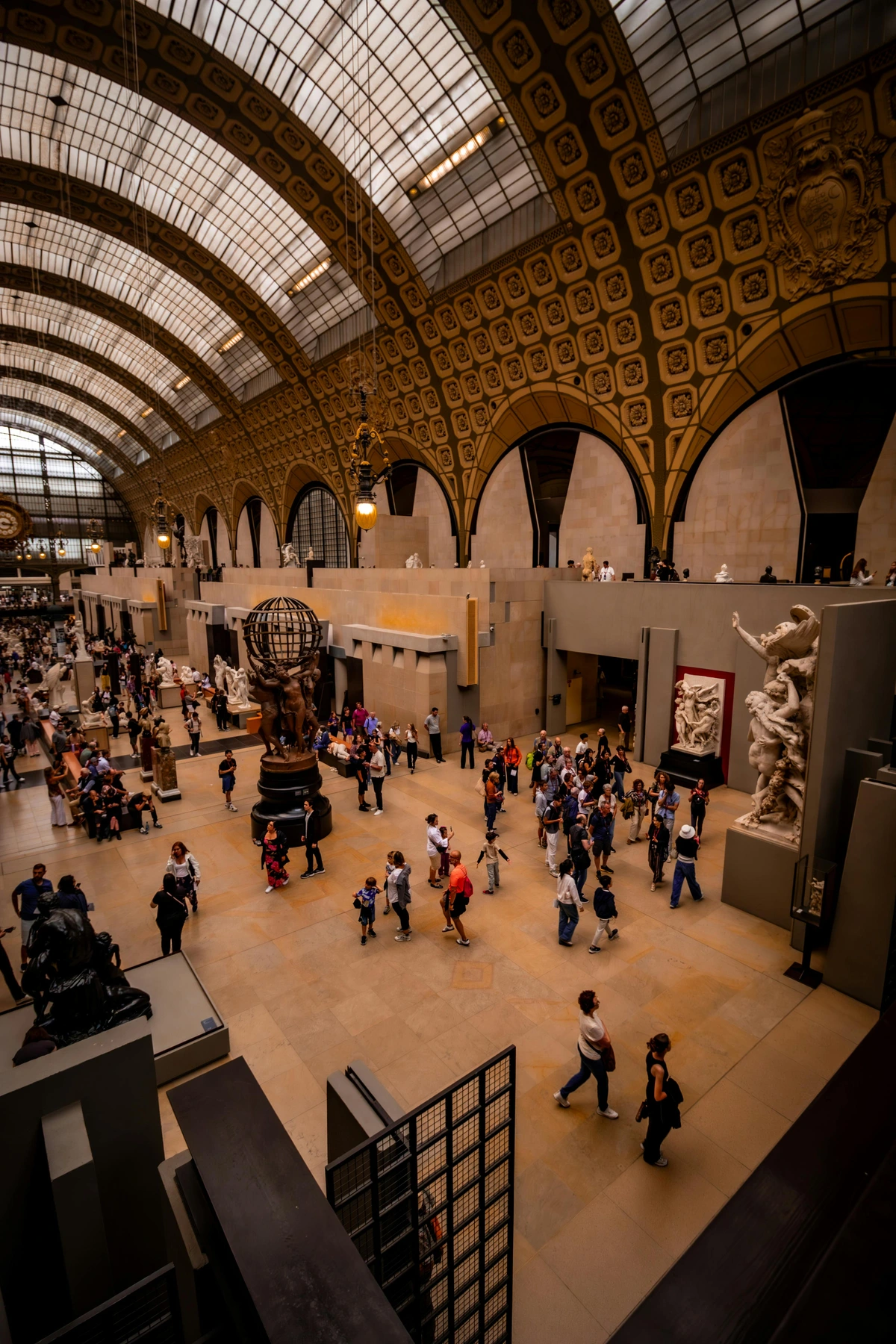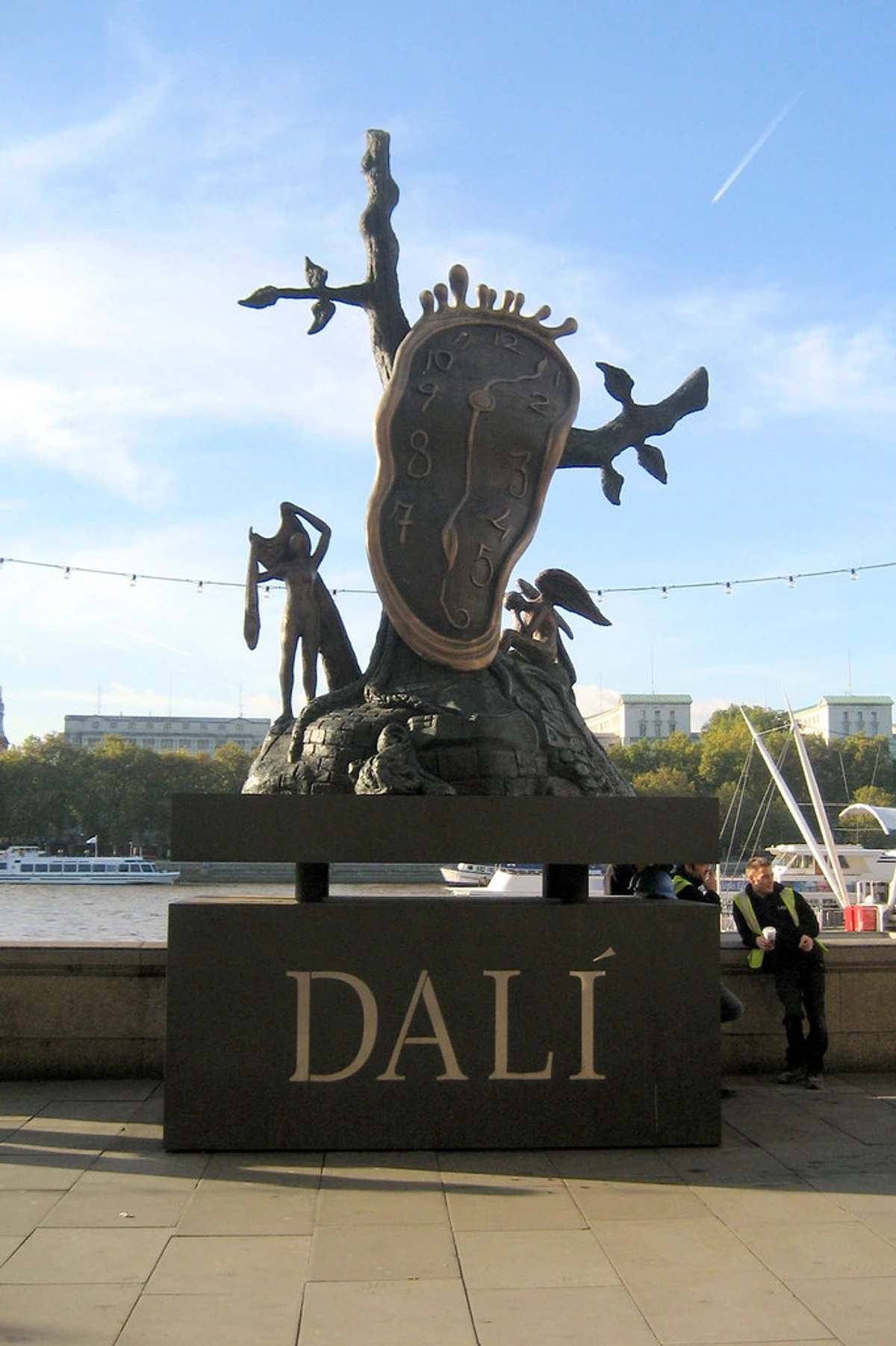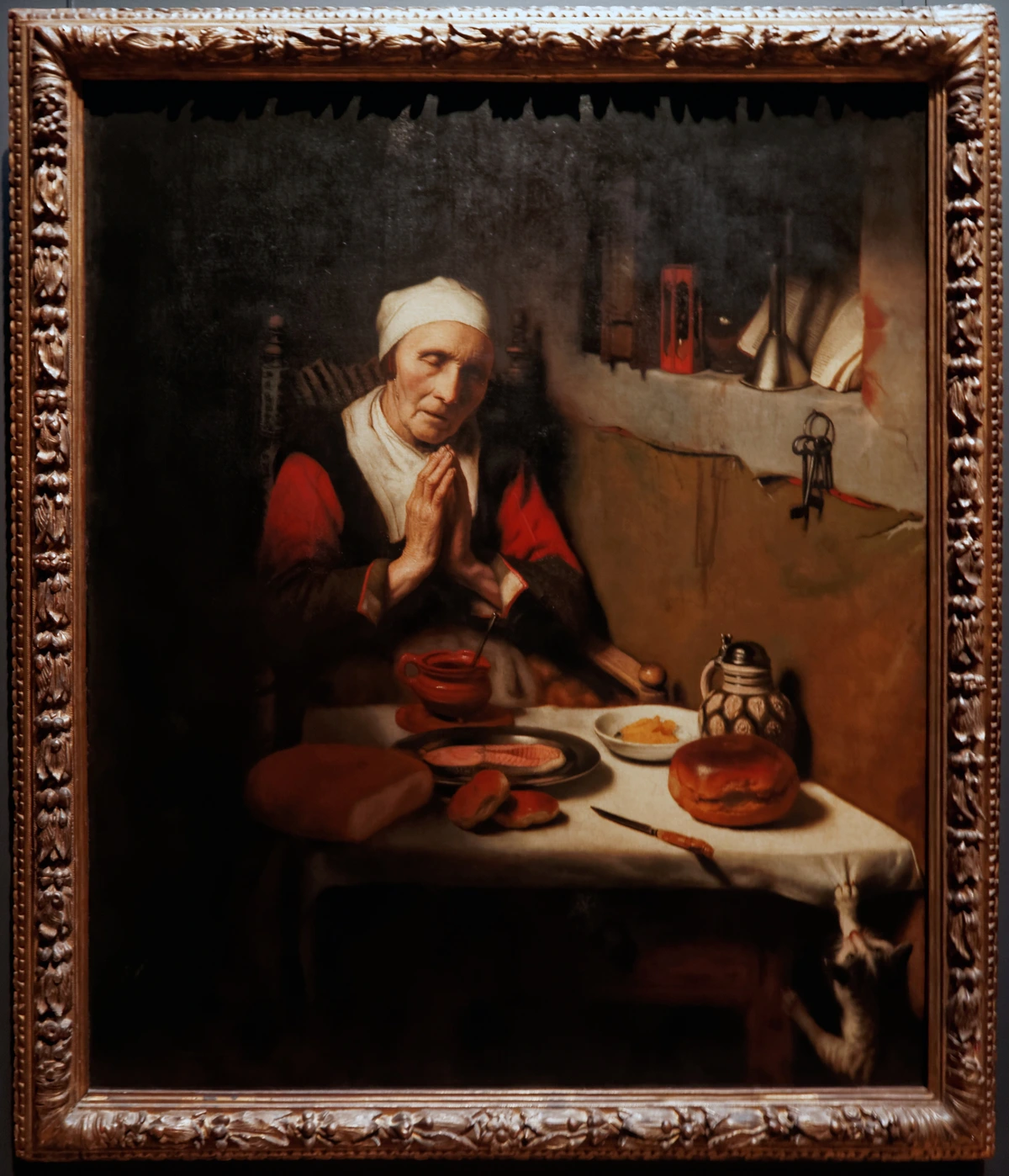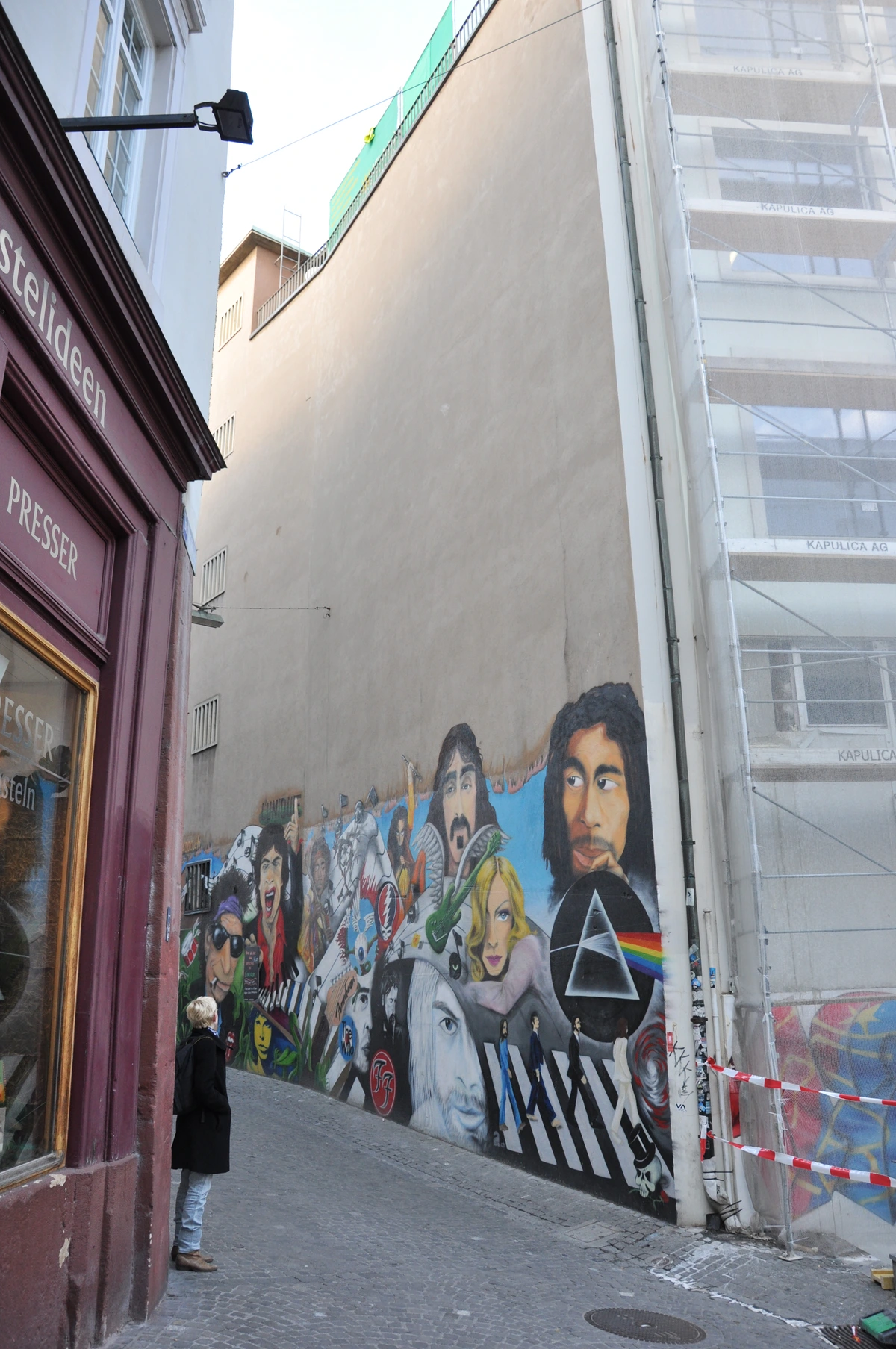A First-Timer's Guide to The Getty Center in Los Angeles
Discover The Getty Center in Los Angeles with this comprehensive first-timer's guide. Explore its stunning architecture, world-class art collection, and serene gardens, along with practical tips for planning your visit.
The Ultimate First-Timer's Guide to The Getty Center: A Curator's In-Depth Perspective
Ah, The Getty Center. Perched majestically in the Santa Monica Mountains, it has long been regarded as more than just a museum—it's an experience, a statement, and frankly, a bit of a marvel. This sprawling campus, envisioned by oil magnate J. Paul Getty as a gift to the world, truly feels like an art capital of the world condensed into a single, awe-inspiring destination, offering a unique blend of intellectual stimulation and sheer visual delight. The curator often finds that the initial ascent by tram, watching the city unfold beneath, is the perfect prelude to the artistic journey ahead. It's a place that transcends the ordinary, inviting a deeper engagement with art, architecture, and the breathtaking natural landscape.
Ah, The Getty Center. Perched majestically in the Santa Monica Mountains, it has long been regarded as more than just a museum—it's an experience, a statement, and frankly, a bit of a marvel. This sprawling campus, envisioned by oil magnate J. Paul Getty as a gift to the world, truly feels like an art capital of the world condensed into a single, awe-inspiring destination, offering a unique blend of intellectual stimulation and sheer visual delight. The Getty, through the J. Paul Getty Trust—a philanthropic organization dedicated to the visual arts and humanities—is committed to the "advancement of knowledge and the appreciation of the visual arts." This profound mission permeates every aspect of the Center, from its world-class collections to its extensive research and conservation efforts. The curator has always been particularly struck by the enduring legacy of J. Paul Getty's vision, a commitment that transformed his personal collection into an accessible public trust, fostering art appreciation on a truly grand and inclusive scale, making invaluable artistic and cultural heritage available to all. For any art enthusiast (or really, anyone who appreciates a good view and some stunning architecture) planning a visit to Los Angeles, this iconic institution is, in the curator's opinion, a non-negotiable stop. This guide aims to equip the first-time visitor with all the essential information to navigate and truly appreciate the Getty's myriad offerings, from its renowned art collections to its serene gardens and striking Modernist design. It's a place that resonates deeply, offering a blend of culture and calm that is surprisingly rare in a bustling city, embodying a modern acropolis of art and thought. The curator finds that exploring the Getty is akin to unfolding a beautifully crafted narrative, where each turn reveals a new perspective, a fresh piece of history, or a moment of profound beauty. It's a journey that continually rewards the curious, a place where one can connect with centuries of human creativity amidst a backdrop of breathtaking natural beauty and architectural grandeur. Indeed, the Center stands as a modern acropolis of art and thought, where the very act of wandering becomes a meditative experience, prompting reflection on humanity's creative spirit through the ages.
To the curator, the Getty Center stands as a beacon of artistic and architectural excellence, a place that transcends the typical museum experience. It’s an institution that not only houses invaluable art but also serves as a vibrant educational and cultural hub, meticulously designed to engage and inspire every visitor. This comprehensive guide, crafted from countless personal explorations, will delve into every facet of the Getty, ensuring your first visit is as enriching and memorable as possible. We’ll cover the practicalities, the must-see masterpieces, and those subtle nuances that transform a good visit into an unforgettable journey. It's worth noting early on, however, that the Getty also operates a sister site, the Getty Villa, located in Malibu. While this guide focuses on the Center, the Villa offers a distinctly different, yet equally enriching, experience. It is entirely dedicated to ancient Greek, Roman, and Etruscan art, housed in a magnificent recreation of a Roman country estate, complete with exquisite period gardens. The curator considers both the Center and the Villa essential destinations for any art enthusiast, but strongly recommends planning separate, focused visits to fully appreciate the unique offerings of each.
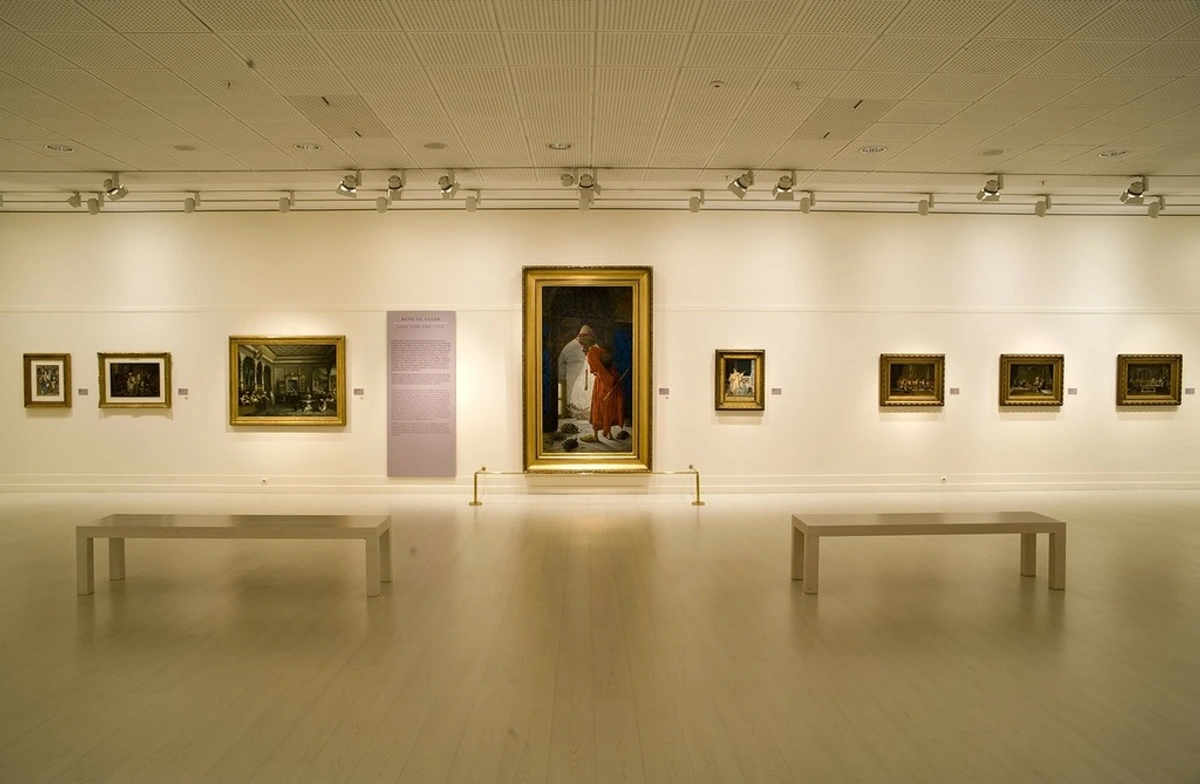
Planning Your Visit to The Getty Center: Essential Tips from a Curator
Visiting The Getty Center is an experience that genuinely benefits from a little foresight. The sprawling campus, designed by the renowned architect Richard Meier, isn't just a museum; it's a carefully crafted destination, meticulously planned to offer both artistic inspiration and serene contemplation. Knowing a few things beforehand can truly elevate one's day from a pleasant visit to an unforgettable cultural adventure, transforming it into a journey of discovery. So, consider these the curator's pre-game strategy notes for a truly enriching exploration, ensuring every moment is maximized and every vista appreciated, from the moment one arrives. From mastering transportation to choosing the ideal time of day, strategic planning is key to unlocking the Getty's full potential and making the most of its myriad offerings.
Location and Getting There
The Getty Center calls 1200 Getty Center Drive, Los Angeles, CA 90049, home. Now, here's a crucial detail for first-time visitors: direct vehicle access to the main campus is a no-go. One will park in a multi-level structure at the base of the hill, and from there, it's an absolutely charming (and complimentary!) tram ride up. The curator views this ascent as the official start of the Getty experience, a metaphorical and literal rising above the urban bustle. As the tram slowly ascends, one can watch the panoramic views of Los Angeles, including glimpses of the Hollywood Hills, the vast Pacific Ocean, and the downtown skyline, unfold, building anticipation for the cultural treasures ahead. This brief, complimentary journey offers not only unique photographic opportunities but also serves as a deliberate design choice, transforming the arrival into a serene and inspiring transition from the city's energy to the tranquil artistic realm of the Center.
Parking is available on-site for a flat fee per car, a charge the curator finds perfectly reasonable given the full day of world-class art, stunning architecture, and unparalleled views one receives. It's wise to note that during peak visitation times, particularly on weekends and holidays, the parking structure can fill up quickly, making an early arrival a strategic advantage. During such times, the tram queue can also be substantial, so factoring in extra time is a smart move. For those championing green travel, numerous public transportation options are available, offering a sustainable and often stress-free way to reach the Getty. Several Metro bus lines, including the 734 and 234, connect directly to the Getty Center Drive stop, from which visitors can also catch the tram. Ride-sharing services like Uber or Lyft offer a convenient alternative, dropping guests directly at the Lower Tram Station, alleviating parking concerns. While the idea of walking up the hill might appeal to some, the curator strongly advises against it; visitors should save their energy for exploring the expansive grounds and galleries that await them at the summit. The Getty is quite literally built into the hills, and the ascent is steeper than it appears, making comfortable walking shoes an absolute must, even before reaching the top.
Transportation Method | Details | Curator's Tip |
|---|---|---|
| Car | On-site parking at base of hill, $20 flat fee ($15 after 3 PM) | Arrive early on weekends/holidays; value for a full day's experience; consider carpooling to reduce environmental impact and cost, and factor in tram wait times. |
| Tram | Complimentary ride from parking garage to Center | The official start of your Getty experience; enjoy the unfolding views, and use it as a moment of transition and anticipation. |
| Metro Bus | Lines 734, 234 connect to Getty Center Drive stop | Environmentally friendly; offers a direct route for public transport users; check Metro's official website for updated routes and schedules, and confirm tram connection. |
| Ride-Sharing (Uber/Lyft) | Drops off at Lower Tram Station | Convenient for direct access without parking; check surge pricing during peak hours; confirm drop-off point is indeed the Lower Tram Station. |
| Walking | Discouraged due to steep incline and extensive campus exploration | Seriously, save your energy for the art and gardens! The campus is extensive, and the ascent is more challenging than it appears. |
Hours and Best Times to Visit
The Getty Center is typically open from Tuesday to Sunday. However, and this cannot be stressed enough, it is always advisable to check their official website for the most current operating hours and any special closures, as these can vary, especially around holidays or during special events. The Getty also occasionally hosts captivating evening events, such as lectures, concerts, or special "Getty Villa Nights" (at its sister site, the Getty Villa), which can influence operating hours or offer unique after-hours access, providing a distinctly different, often magical experience. One should always check the official website for details on these special happenings, as they often provide a truly enchanting way to experience the Center after the daytime crowds have dispersed. These special events often require separate tickets or reservations, so planning ahead is paramount to secure a spot. The curator particularly enjoys the evening lectures, which offer a deeper dive into art historical topics or current exhibitions, often with leading scholars presenting their insights, enriching the understanding of the arts.
To avoid crowds, the curator usually suggests a weekday morning, shortly after opening. This allows one to experience the tranquility before the bustle, and sometimes, that quiet allows for a deeper connection with the art and architecture. For those who appreciate dramatic vistas, a late afternoon visit culminating in sunset offers truly spectacular panoramic views of Los Angeles, the Pacific Ocean, and the surrounding mountains. The "golden hour" light casts a magical glow over the travertine and gardens, making it an incredible photo opportunity and a perfect way to end a day of cultural immersion. Seasonal changes, such as cooler winter days or warmer summer evenings, can also influence the ideal visiting time, with the curator often preferring spring or fall for their balanced weather. Weekday mornings, especially right at opening, offer the most serene experience, allowing for quiet contemplation of the art without the distraction of larger crowds. Conversely, weekend afternoons, while bustling, offer a vibrant energy and are often when special family programs or performances take place.
Season | Best For | Considerations |
|---|---|---|
| Spring | Mild weather, lush gardens, comfortable for outdoor exploration | Peak bloom in the Central Garden; can be popular, book ahead |
| Summer | Longer daylight hours, vibrant atmosphere | Can be hot; evening events and sunset views are spectacular |
| Fall | Pleasant temperatures, clearer views after summer haze, fewer crowds | Ideal balance of weather and visitor numbers; perfect for photography |
| Winter | Cooler, crisp air, potential for dramatic cloud formations | Fewer crowds; pleasant for indoor gallery exploration; check for holiday hours |
Time of Day | Best For | Considerations |
|---|---|---|
| Early Morning | Avoiding crowds, peaceful contemplation, photography | Cooler temperatures, fewer people in photos; ideal for serious art viewing; allows for a more intimate engagement with the architecture and art, capturing the soft morning light. |
| Lunchtime | Enjoying dining options, people-watching, brief breaks | Can be busier, plan for restaurant wait times or utilize cafes; consider packing a picnic to enjoy in designated garden areas. |
| Late Afternoon | Sunset views, dramatic lighting for photography, romantic visits | More crowded, plan for parking and tram queues; perfect for romantic visits or capturing the 'golden hour'; be prepared for slightly cooler temperatures as evening approaches. |
| Weekdays | Fewer crowds, relaxed pace, scholarly visits | Ideal for deep exploration and maximizing time in galleries; perfect for concentrated study or quieter contemplation. |
| Weekends | Vibrant atmosphere, family activities, special events | Expect more visitors, especially in peak seasons; look out for special family programs, performances, or temporary events that bring a lively energy. |
Admission and Ticketing
Perhaps one of the most delightful (and frankly, refreshing) aspects of The Getty Center is that admission is free for all visitors. This commitment to public access is truly commendable, making world-class art and culture available to everyone. The only cost typically incurred is for parking if one drives, which the curator considers an exceptional value for a full day of world-class art, culture, and stunning views. Parking is a flat rate of $20 per car, or $15 after 3 PM, a detail worth noting for those planning a late afternoon visit. This fee helps maintain the impeccable grounds and facilities, contributing to the overall quality of the visitor experience.
However, and this is a significant point, especially for those who wish to avoid queues or the disappointment of not gaining entry, advanced, timed-entry reservations are often highly recommended. During peak seasons, holidays, or for popular special exhibitions, these reservations are sometimes even mandatory. The curator has observed firsthand how smoothly things proceed for those who have booked ahead versus those who have not, so securing one's spot online before arrival is always a wise decision. While general admission remains free, certain special exhibitions may occasionally require a separate, ticketed reservation, even if still at no cost. Always confirm the specifics on the official Getty website. This is particularly crucial for blockbuster shows, which can sell out weeks in advance. For larger groups, specialized booking procedures are in place, often requiring substantial lead time.
Here’s a quick overview of what to remember about admission and ticketing: Yes, that is correct – zero charge to enter the museum, explore the gardens, or simply revel in the architecture. The only cost typically incurred is for parking if one drives, which the curator considers an exceptional value for a full day of world-class art, culture, and stunning views. Parking is a flat rate of $20 per car, or $15 after 3 PM, a detail worth noting for those planning a late afternoon visit. This fee helps maintain the impeccable grounds and facilities, contributing to the overall quality of the visitor experience.
However, and this is a significant point, especially for those who wish to avoid queues or the disappointment of not gaining entry, advanced, timed-entry reservations are often highly recommended. During peak seasons, holidays, or for popular special exhibitions, these reservations are sometimes even mandatory. The curator has observed firsthand how smoothly things proceed for those who have booked ahead versus those who have not, so securing one's spot online before arrival is always a wise decision. While general admission remains free, certain special exhibitions may occasionally require a separate, ticketed reservation, even if still at no cost. Always confirm the specifics on the official Getty website. This is particularly crucial for blockbuster shows, which can sell out weeks in advance. For larger groups, specialized booking procedures are in place, often requiring substantial lead time. The curator stresses that a few moments online can save significant time and potential frustration upon arrival, particularly during peak times.
Reservation Tip | Description |
|---|---|
| Book Early | Secure one's preferred date and time slot, especially for weekends or holidays. |
| Check for Special Exhibitions | Some temporary shows may have separate, mandatory reservations or even a small fee. |
| Confirm Mandates | During high season or holidays, reservations might be required for all entry to manage visitor flow. |
| Be Flexible | If preferred dates are booked, consider weekdays or alternative times for easier access. |
| Group Reservations | For groups larger than 10, special booking procedures and lead times may apply. |
| Parking Passes | Parking is a flat rate ($20/car, $15 after 3 PM), separate from admission. |
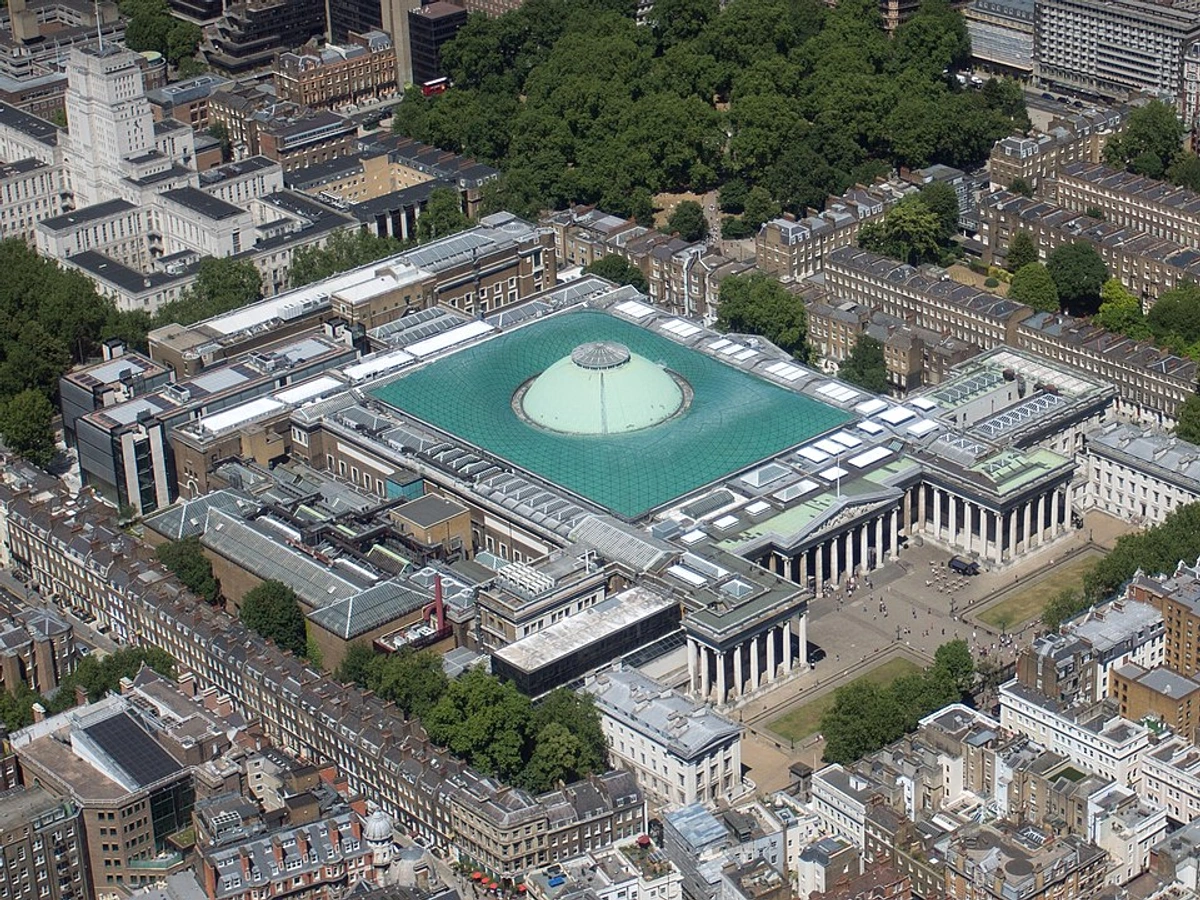
What to Bring and Wear
The curator believes that a prepared traveler is a happy traveler, especially when visiting a destination as expansive as the Getty Center! First and foremost, comfortable walking shoes are an absolute must. And the curator means must. Visitors will be doing a fair amount of walking, climbing stairs, and exploring vast outdoor spaces across the campus, so saving one's feet (and one's mood!) the agony is paramount. Think of it as a pleasant urban hike! The curator has, on more than one occasion, underestimated the campus's scale and regretted a less-than-sensible footwear choice, learning this lesson the hard way!
Given Southern California's often-blazing sunny climate, sunscreen, a wide-brimmed hat, and good sunglasses are also highly recommended. There's plenty of shade across the expansive campus, but visitors will undoubtedly spend a good deal of time admiring outdoor sculptures, strolling through gardens, and soaking in the panoramic views. A reusable water bottle is another non-negotiable; there are plenty of hydration stations throughout the grounds, which is a thoughtful and environmentally conscious touch. Lastly, layers are always a good idea – a light jacket or a cardigan can be one's best friend! Temperatures can vary significantly between the cool, climate-controlled interiors and the open, sunny outdoor spaces, especially if planning to stay into the evening to catch that stunning sunset. Small backpacks or bags are convenient for carrying essentials and souvenirs, and are generally permitted in the galleries, though the curator advises checking bags at the information desk or utilizing the available lockers for any items larger than a small purse or standard backpack (typically anything over 11 x 17 x 8 inches). This ensures the safety of artworks, maintains smooth visitor flow, and allows for hands-free exploration, which the curator finds invaluable. A small crossbody bag, just large enough for a water bottle, phone, and a small notebook for sketching or jotting down reflections, is often the curator's preferred choice, ensuring maximum mobility and hands-free enjoyment throughout the expansive campus.
Climate Consideration | Recommendation | Why It Matters |
|---|---|---|
| Southern California Sun | Sunscreen (high SPF), wide-brimmed hat, sunglasses | Protects from intense UV rays, prevents sunburn and eye strain, enhancing comfort for prolonged outdoor enjoyment. |
| Temperature Fluctuations | Layers (light jacket/cardigan, scarf) | Allows seamless adaptation between cool, climate-controlled indoor galleries and the often warm, open outdoor areas, especially if staying into the evening. |
| Dry Air | Reusable water bottle | Essential for hydration throughout the day, with numerous convenient refill stations available across the campus, promoting well-being and environmental consciousness. |
| Sea Breeze | A light windbreaker or wrap, especially for evening visits | Can bring a surprising chill, particularly on observation decks overlooking the Pacific Ocean, ensuring comfort during sunset viewing. |
| Indoor Climate Control | Awareness and respect for climate-controlled environments | Ensures the optimal preservation of invaluable artworks, while also maintaining a comfortable temperature for long, contemplative viewing periods within the galleries. |
Item | Why Bring It |
|---|---|
| Comfortable Walking Shoes | Essential for navigating the expansive, hilly campus. |
| Sunscreen, Hat, Sunglasses | Protection from the strong Southern California sun. |
| Reusable Water Bottle | Stay hydrated with numerous refill stations available. |
| Layers (Light Jacket/Cardigan) | Adapt to temperature changes between indoors and outdoors. |
| Small Backpack/Bag | Convenient for carrying essentials and souvenirs. |
| Camera/Smartphone | Capture the stunning art, architecture, and views. |

Accessibility at the Getty Center
The curator finds it important to highlight accessibility, as it’s an area where all major institutions should excel, and the Getty truly does. The campus is thoughtfully designed to be fully accessible for visitors with disabilities, featuring ramps, elevators, and accessible restrooms throughout all public areas. Manual wheelchairs are readily available for complimentary loan on a first-come, first-served basis at the Lower Tram Station and the Museum Information Desk. Additionally, accessible parking is readily available, and courtesy golf cart transportation can be arranged for those needing assistance navigating the expansive outdoor paths between buildings and gardens. Large print guides, assistive listening devices, and sign language interpreters (with advance notice) may also be available upon request, underscoring the Getty's profound dedication to ensuring everyone can enjoy its myriad offerings. The Getty is continuously improving its accessibility features, sometimes offering verbal description tours for visually impaired visitors or tactile experiences for certain architectural elements, making the visit profoundly inclusive for all. This commitment extends to providing accessible viewing platforms in certain galleries and gardens, ensuring everyone can enjoy the spectacular art and vistas. The curator deeply appreciates this dedication, recognizing that true access goes beyond mere physical ramps to encompass comprehensive sensory and interpretive experiences, striving to make art truly available to every individual, fostering a welcoming environment for all.

To the curator, the Getty Center's comprehensive accessibility is a testament to its thoughtful design and unwavering commitment to public service, echoing its architectural principles of clarity and harmony.
Architectural Marvels and Serene Gardens
Richard Meier's architectural vision for the Getty Center is, in itself, as much an exhibit as the art within its walls. One finds themselves constantly captivated by the extensive use of travertine stone (a type of limestone) and aluminum, creating a luminous, cohesive aesthetic that harmonizes so perfectly with the Southern California light—a light Meier himself meticulously studied and incorporated. The buildings are a profound study in geometric precision, open spaces, and the masterful manipulation of natural light, allowing the art to be viewed under optimal conditions while maintaining a connection to the exterior world. Meier's design philosophy centered on creating a campus that felt both monumental and welcoming, employing a strict 30-inch grid system that dictates the placement of every element, from stone pavers to window frames. This meticulous planning results in a remarkable sense of order and flow throughout the complex, guiding visitors seamlessly from gallery to garden. The interplay of solids and voids, the carefully considered sightlines, and the integration of indoor and outdoor spaces exemplify a modernist approach that is both aesthetically rigorous and incredibly functional for a public institution. The curator often observes how the architecture itself encourages a meditative pace, inviting visitors to pause and appreciate the thoughtful design at every turn. It's a testament to Meier's genius that such a vast complex feels so harmoniously integrated, a true masterclass in what is design in art.

One quickly appreciates the interplay of solid and void, the thoughtful placement of windows framing specific, breathtaking views, and the consistent use of that remarkable travertine, which was, fascinatingly, quarried in Bagni di Tivoli, Italy, from the same quarries that supplied materials for the Colosseum and other ancient Roman structures. This material choice not only provides a warm, earthy tone but also subtly links the modern structure to ancient Roman architecture, creating a sense of timelessness and historical continuity, offering a subtle nod to antiquity amidst modernism. The curator recalls thinking, during an early visit, how the Getty wasn't just a place to see art, but to experience art through its very structure. Indeed, exploring the campus often feels like wandering through a meticulously designed outdoor sculpture park where the buildings themselves are the primary works of art, guiding one's eye and experience. If one is interested in how such elements shape our perceptions, the thoughts on understanding the elements of design in art might be enjoyed. Moreover, keen observers will discover numerous "hidden" architectural gems, such as the subtle changes in the travertine patterns or the surprising vistas framed by seemingly ordinary windows, inviting a more intimate engagement with Meier's vision and encouraging a deeper appreciation for the art of structural design. The sheer scale of the travertine usage, nearly 1.2 million square feet, creates a monumental presence, yet the way it's cut and arranged—some pieces smooth and polished, others rough-hewn—adds a tactile richness that begs to be experienced up close. The curator particularly enjoys touching the different textures, a subtle yet profound way to engage with the building materials and understand the architect's material palette, enhancing the tactile engagement with the very fabric of the Center.
The architecture of the Getty Center itself is an invitation to thoughtful observation, much like contemplating a masterwork. One might find oneself, much like a figure in a classic painting, engrossed in the sheer detail and play of light across the magnificent travertine.
The Central Garden
Then there's the Central Garden, a true masterpiece in its own right, designed by the visionary artist Robert Irwin. This space is often regarded as a living, breathing sculpture that actively encourages contemplation and discovery. Irwin's profound vision was to create "a sculpture in the form of a garden, which would turn out to be a lasting work of art," a philosophy evident in every detail, from the choice of plants to the meandering pathways. Irwin famously resisted traditional garden design, instead conceiving the space as an ever-changing artwork meant to engage all the senses. Its design is brilliant: featuring a natural ravine that descends to a circular pool with an azalea maze floating within it – a truly delightful spectacle to observe from the various vantage points above – and a diverse planting scheme that, like any great artwork, changes dramatically with the seasons and even by the hour of the day. The sounds of trickling water, the varied textures of the foliage, and the vibrant bursts of color all contribute to an immersive sensory experience that few other gardens can match. The curator often finds solace here, observing how the light plays on the water and the gentle rustle of leaves, creating a dynamic, living artwork. Irwin's genius lies in creating a garden that demands active participation, encouraging visitors to slow down, observe, and truly feel the space, rather than simply passing through it.

It's a truly immersive experience, offering a stark yet beautiful contrast to the rigid lines of the surrounding architecture. This peaceful retreat is where the curator always recommends lingering. One should not rush through it; allow ample time to wander the meandering paths, discover hidden alcoves, and simply absorb its profound tranquility. Irwin himself famously said, "Always changing, never twice the same," about the garden, and the curator finds that perfectly encapsulates its dynamic beauty and enduring appeal, inviting visitors to return again and again. For another incredible example of art integrated with nature, the curator often thinks of the Storm King Art Center, a testament to how art can profoundly transform and interact with its environment. The Central Garden is also an exceptional example of what is plein air painting inspiration, inviting artists to capture its ever-changing beauty. Every visit unveils new floral arrangements, different light patterns, and fresh perspectives, making it a place of continuous discovery and a delightful challenge for any artist. It's a place where the concept of art inspirations truly comes alive, a vibrant tapestry of natural design and artistic intent.

Other Gardens and Outdoor Spaces
Beyond the iconic Central Garden, the Getty Center boasts several other meticulously maintained gardens and courtyards, each offering its own unique charm and inviting atmosphere. The curator especially loves the Cactus Garden, which provides a dramatic, sculptural landscape against the backdrop of the city – a true testament to Southern California flora, boasting varieties like towering saguaros, vibrant aloes, and intricate succulents arranged with artistic precision. The tranquil East Garden, often overlooked, provides a serene counterpoint with its formal plantings and quiet alcoves, perfect for contemplation. These diverse outdoor spaces are not just pretty; they offer unique plantings and vantage points, providing ample opportunities for quiet reflection or simply enjoying the glorious Los Angeles sunshine. The open-air terraces and observation decks scattered throughout the complex are, without a doubt, a favorite spot for photographers and casual visitors alike, with many hours spent observing the changing light over the city from these elevated positions. Each garden, from the arid beauty of the Cactus Garden to the tranquil East Garden, is designed to offer a distinct experience, complementing the architecture and the art within, enriching the overall visitor journey.
The varied outdoor spaces often remind the curator of how different artists utilize their environment to create impactful works, much like the profound interplay between nature and sculpture seen in pieces like Anish Kapoor's work. It's a fascinating dialogue between the natural and the constructed, the organic and the geometric.
These varied outdoor spaces often remind the curator of how different artists utilize their environment to create impactful works, much like the profound interplay between nature and sculpture seen in pieces like Anish Kapoor's work.
Architectural/Garden Feature | Description | Key Experience |
|---|---|---|
| Travertine Stone | Luminous Italian limestone, provides warmth and links to ancient Rome | A tactile sensation, visual continuity, and subtle historical resonance across the entire campus. |
| Geometric Precision | Richard Meier's hallmark: clean lines, open spaces, masterful interplay of forms | A profound sense of order, striking visual compositions, and purposeful framing of breathtaking views. |
| Natural Light | Thoughtful window placement, bright interiors, and seamless connection to outdoors | Optimizes art viewing conditions, uplifts the mood, and dynamically changes the perception of space throughout the day. |
| Central Garden | Robert Irwin's living sculpture with azalea maze and natural ravine | Encourages contemplation, personal discovery, an immersive sensory experience, and dramatic seasonal transformations. |
| Cactus Garden | Drought-tolerant plants, dramatic sculptural forms, panoramic views | Showcases unique Southern California flora, creates striking compositions against the urban backdrop, and offers exceptional photo opportunities. |
| East Garden | Tranquil, formal plantings with quiet alcoves | Offers peaceful retreat, a sense of serenity, and a contrast to the dynamic Central Garden. |
| Observation Decks | Multiple terraces and vantage points throughout the campus | Provides unparalleled panoramic views of Los Angeles, the Pacific Ocean, and the San Gabriel Mountains, ever-changing with the light. |
Highlights of the Collection: A Curatorial Journey Through European Art
The J. Paul Getty Museum's collection at the Center primarily focuses on European art from the Middle Ages to the early 20th century. While it may not be as encyclopedic as, say, The Louvre Museum in Paris or The Metropolitan Museum of Art NYC, its carefully curated selection includes masterpieces that are truly captivating and offer profound insights into the artistic currents of various eras. The curator finds that the strength of the Getty's collection lies in its deliberate focus and exceptional quality, rather than sheer breadth, offering a more intimate and focused experience for the discerning art lover. The museum's curatorial approach emphasizes deep scholarship and the presentation of art in contexts that illuminate its historical and cultural significance, often juxtaposing works in ways that reveal fascinating connections. Each gallery is thoughtfully arranged, not just as a display space, but as an environment designed to encourage visitors to delve into the nuances of each artistic period and appreciate the revolutionary techniques employed by the masters, fostering a profound connection with the art.
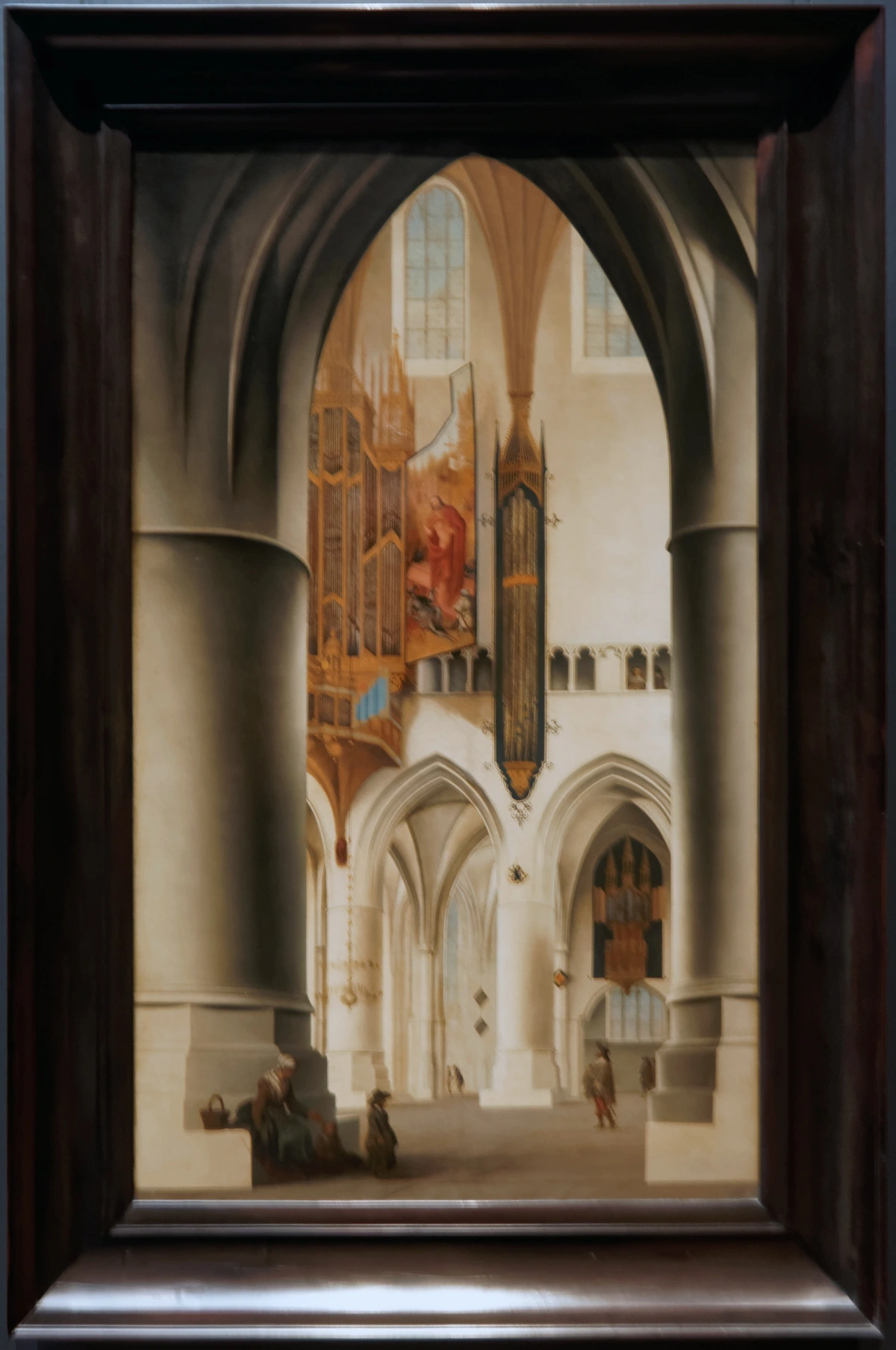
European Paintings
Now, let's talk art! Visitors will find an impressive array of European paintings, including iconic works such as Van Gogh's Irises (the colors are just breathtaking in person!), Monet's Wheatstacks, Snow Effect, Morning (a masterclass in capturing fleeting light), and Rembrandt's Abduction of Europa. Beyond the iconic works, other notable artists in the European paintings collection include masters like Peter Paul Rubens, J.M.W. Turner, Édouard Manet, and Jean-Honoré Fragonard. The collection elegantly spans movements from the Italian Renaissance and Dutch Golden Age to the Baroque, Rococo, and Impressionist periods, offering a rich historical narrative of artistic evolution. One particularly enjoys how the collection is organized across various galleries, often grouped by period or national school, allowing for a focused and enriching viewing experience. The galleries themselves are meticulously designed to optimize natural light, creating an ideal environment for viewing these masterpieces, allowing their colors and textures to truly come alive. The advice is clear: don't rush. Take time with each piece, and definitely keep an eye out for the detailed didactic panels that provide invaluable context for each masterpiece. These panels are invaluable resources, offering insights into the artists, their revolutionary techniques, and the historical significance of the works. The curator often finds that returning to these familiar works reveals new details, especially when the natural light shifts throughout the day, subtly altering one's perception of color and texture. It's a reminder that truly great art is inexhaustible, always offering something new to those who pause and look deeply. The range of brushwork alone, from the delicate precision of a Dutch Golden Age master to the vibrant impasto of an Impressionist, is a profound lesson in how artists use color and technique, demonstrating the incredible versatility and expressive power of paint.
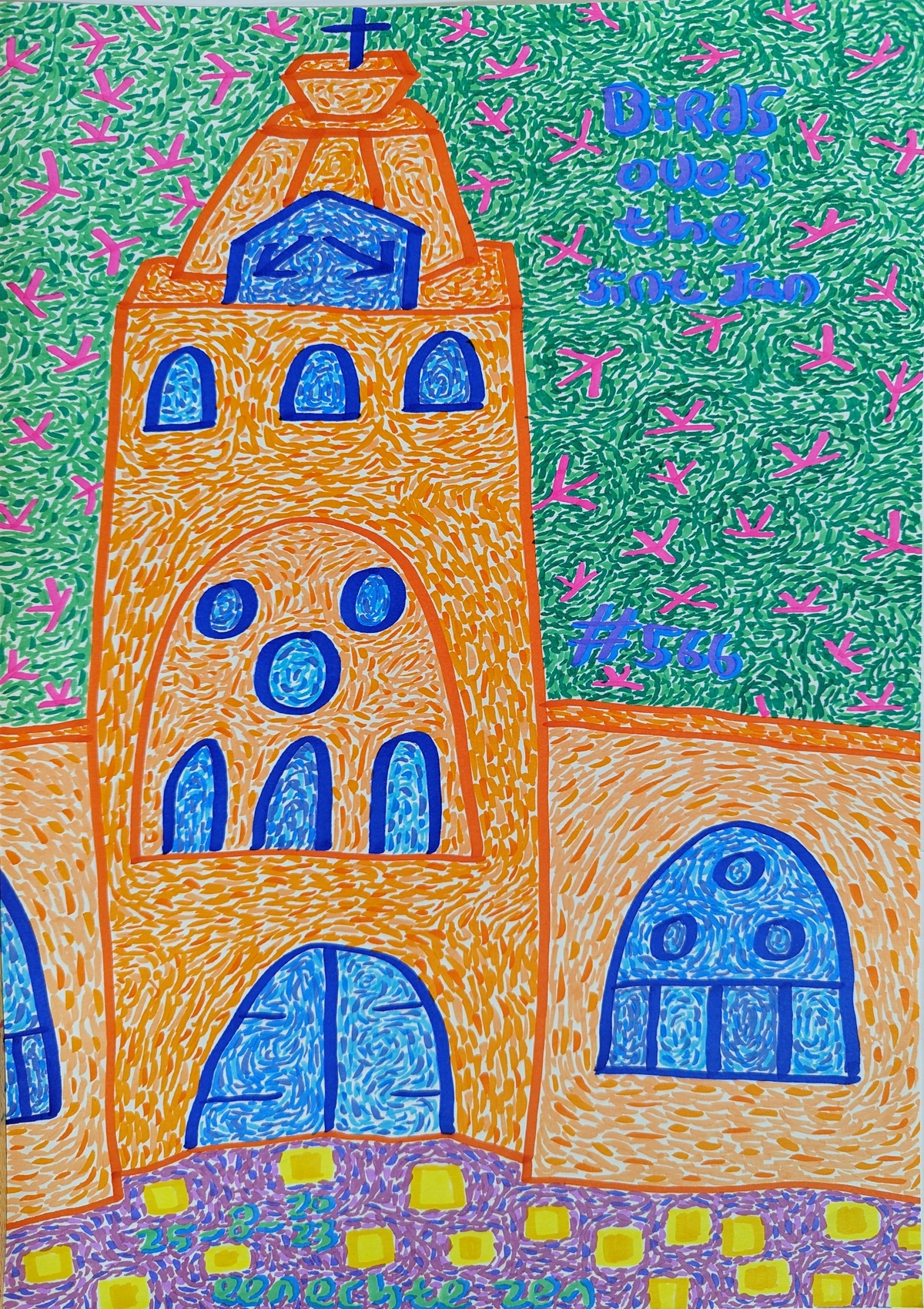
Sculpture and Decorative Arts

The Getty's collection of sculpture and decorative arts is, in the curator's opinion, equally compelling. Visitors will discover exquisite French furniture from the Louis XIV and Louis XV periods, characterized by their elaborate carvings, intricate marquetry, and gilded bronze mounts (ormolu), gleaming Sèvres porcelain that once graced royal tables with its delicate artistry, and intricate tapestries that tell grand stories of bygone eras. These pieces not only demonstrate remarkable craftsmanship – the curator is always stunned by the intricate brushwork and the sheer attention to detail – but also offer a fascinating insight into the opulent lifestyles and artistic trends of European aristocracy, reflecting the aesthetic sensibilities of their time. The collection also includes significant bronze sculptures, often showcasing mythological or allegorical themes, masterful silverwork, intricate clocks, ornate tapestries, and other exquisite objets d'art, each piece a testament to the unparalleled skill of artisans from centuries past. The way they are displayed allows one to truly appreciate the art in context, often imagining them within their original grand settings, transporting the viewer to a bygone era. The curator often considers how the choice of display, whether on ornate pedestals or within period rooms, significantly impacts our perception and understanding of these historical treasures, making the study of displaying sculptures indoors beyond pedestal particularly relevant. If one has a soft spot for intricate design, a parallel might be found in the beauty of Art Nouveau jewelry, or one might be interested in the broader evolution of art in interior design. Sometimes, when observing the bold forms and intricate patterns, the curator even reflects on how different cultures, like the profound influence of African art on modernism, have shaped decorative arts globally – a truly endless rabbit hole of artistic connection! The curator finds that these meticulously crafted objects offer a tangible connection to the past, allowing one to step into the world of European nobility and appreciate the artistry that graced their daily lives, providing a window into the aesthetic sensibilities of their time.
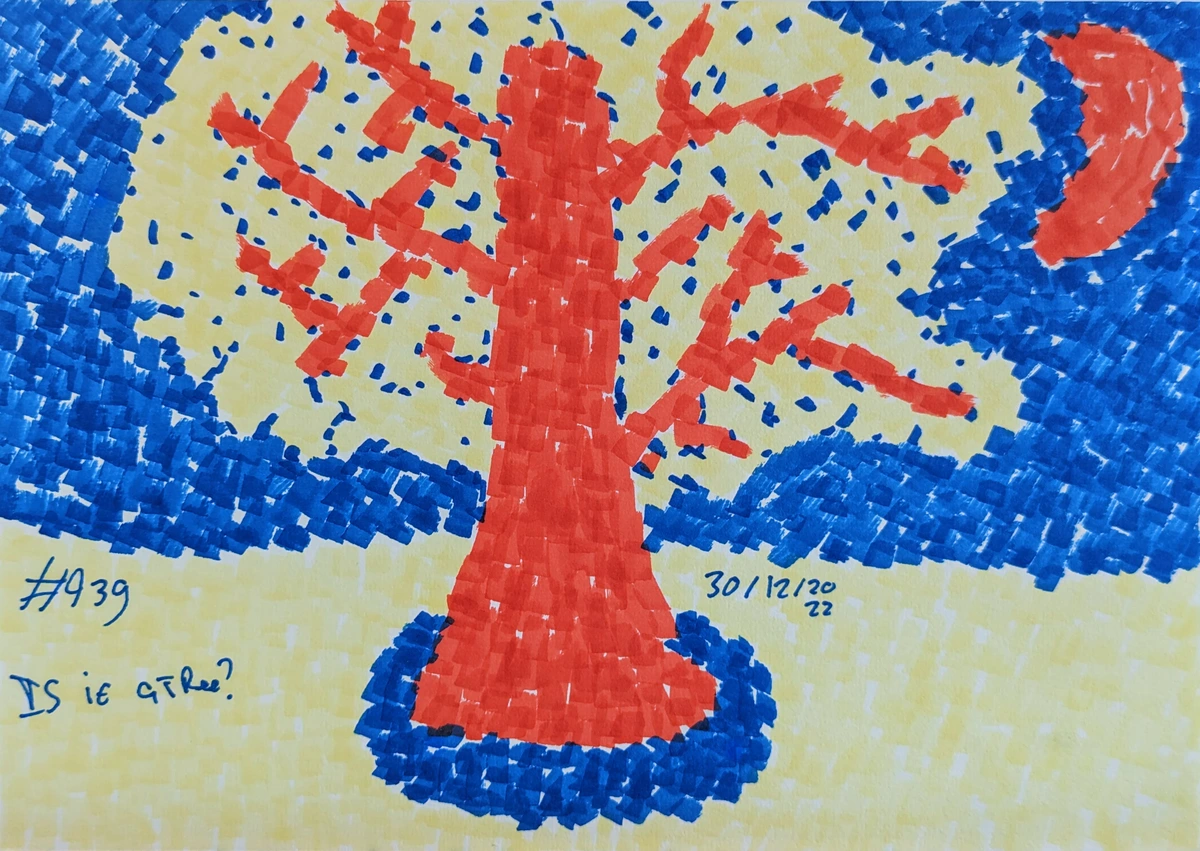
Manuscripts and Photography
Among the Getty's lesser-known, but in the curator's humble opinion, equally significant holdings are its illuminated manuscripts and an expansive collection of photography. The manuscripts, with their delicate gilded lettering and vibrant miniatures, offer a breathtaking glimpse into medieval artistry and storytelling. One finds them utterly mesmerizing, a testament to an art form that often gets overshadowed. The collection includes a breathtaking array of biblical texts, books of hours, and secular literature, some featuring the exquisite work of masters like Jean Fouquet or Simon Bening. These precious objects provide a vibrant window into medieval thought, spirituality, and artistic practice, often showcasing incredible detail and vibrant pigments that have miraculously retained their brilliance for centuries. Each page is a miniature world, a testament to the painstaking devotion of scribes and illuminators.
The photography collection, on the other hand, traces the medium's history from its earliest days to the present, featuring works by groundbreaking artists who pushed the boundaries of what was considered art. From pioneering figures like Louis-Jacques-Mandé Daguerre and William Henry Fox Talbot, who shaped the very foundation of the medium, to modern masters such as Man Ray, August Sander, Julia Margaret Cameron, and Walker Evans, the collection offers a comprehensive overview of photography's artistic and technical evolution. Both collections—the ancient manuscripts and modern photographs—provide a fascinating counterpoint to the more traditional painting and sculpture galleries, offering different lenses through which to view human creativity and its documentation. If one is curious about how this medium evolved, the guide on the history of photography as fine art might pique one's interest. The Getty's commitment to acquiring and preserving these delicate works underscores their immense historical and artistic value. The illuminated manuscripts, in particular, offer a tangible link to a pre-printing press era, revealing the painstaking devotion and collaborative efforts of scribes, illuminators, and binders, while the photography collection highlights the revolutionary power of a new medium to capture and interpret the world, offering a dynamic narrative of human experience.
Collection Area | Key Highlights | What to Expect |
|---|---|---|
| European Paintings | Van Gogh's Irises, Monet's Wheatstacks, Rembrandt's Abduction of Europa | Masterpieces from Middle Ages to early 20th century, grouped by period/school |
| Sculpture & Decorative Arts | French furniture, Sèvres porcelain, intricate tapestries | Insight into aristocratic lifestyles, remarkable craftsmanship |
| Illuminated Manuscripts | Gilded lettering, vibrant miniatures, medieval artistry | Glimpse into medieval storytelling and artistic techniques |
| Photography | Traces medium's history from early days to present, groundbreaking artists | Diverse collection showcasing the evolution of photography as an art form |
The Getty's dedication to collecting across diverse mediums, from medieval manuscripts to groundbreaking photography, demonstrates a profound appreciation for the breadth of human artistic expression, much like discovering a surprising street art mural in an unexpected corner of the world. It reminds the curator that art thrives in all forms and settings.
The Getty's Commitment to Conservation and Research: Guardians of Global Heritage
One aspect of the Getty that the curator finds truly inspiring, and often overlooked by first-time visitors, is its profound commitment to art conservation and scholarly research. The Getty Conservation Institute (GCI) and the Getty Research Institute (GRI), while not always front-and-center in a typical visitor's path, are powerhouses working diligently to preserve cultural heritage worldwide and advance the study of art. Knowing that one is visiting a place that not only displays art but actively protects and expands the knowledge surrounding it, adds another layer of profound appreciation. It serves as a vital reminder that art isn't just about what's on the wall, but the entire ecosystem of its preservation, interpretation, and ongoing study. For instance, the GCI has been involved in projects ranging from the conservation of ancient Egyptian tombs and invaluable archaeological sites in the Valley of the Kings to the preservation of modern architectural masterpieces like Louis Kahn's Salk Institute, employing cutting-edge scientific techniques and innovative methodologies. Concurrently, the GRI houses a vast collection of art historical materials, rare books, and extensive archives, fostering interdisciplinary dialogue and supporting groundbreaking scholarship that shapes our understanding of the visual arts across cultures and time periods. This dual commitment solidifies the Getty's role as a global leader in cultural stewardship, extending its influence far beyond its physical walls through its vital research and conservation efforts. Their efforts range from pioneering new conservation methods for endangered cultural sites to digitizing vast archives, making these invaluable resources accessible to scholars globally. The curator is always impressed by the sheer scope of their influence, reaching far beyond the hills of Los Angeles, underscoring the Getty's role as a silent guardian and active advocate for our shared global heritage. It's a profound reminder that the art we see today is often here thanks to dedicated, often unseen, efforts by passionate experts.
The J. Paul Getty Trust: A Global Steward of the Arts
Before we delve further into the community aspects, the curator feels it’s essential to reiterate the broader mission of the J. Paul Getty Trust itself. As one of the world's wealthiest art institutions, the Trust is not just a museum operator; it’s a global philanthropic and cultural organization dedicated to the visual arts and humanities. Comprising four distinct yet interconnected programs—the J. Paul Getty Museum (which includes both the Center and the Villa), the Getty Conservation Institute (GCI), the Getty Research Institute (GRI), and the Getty Foundation—the Trust operates as a comprehensive ecosystem committed to "advancing the understanding and preservation of the visual arts." This multifaceted structure allows the Getty to engage in a wide array of activities, from direct artistic display and public education to cutting-edge conservation science and deep scholarly research, ensuring a profound and lasting impact on the art world both locally and internationally. It's a sprawling, ambitious vision that truly underpins every aspect of what the visitor experiences on campus, demonstrating an unparalleled commitment to cultural stewardship.
The Getty Center and the Community: A Cultural Anchor in Los Angeles
Beyond its global mission, the Getty Center plays a vital role in the cultural life of Los Angeles. It serves as a beloved public space, a premier destination for family outings, and a powerful source of artistic inspiration for local artists and residents alike. The institution frequently collaborates with local schools and community organizations, offering a diverse array of programs that make art accessible to a wider audience, from hands-on workshops for children, often themed around current exhibitions, to engaging lectures and film series for adults. This commitment fosters a vibrant cultural dialogue within Southern California, ensuring that the arts are not just preserved but actively integrated into the fabric of daily life. This deep connection to its community underscores the Getty's commitment to not only preserve the past but also enrich the present and inspire the future for all, solidifying its role as a true cultural anchor. The Getty even hosts popular "Family Festivals" and outdoor concerts during warmer months, transforming its public spaces into lively community hubs, reflecting a profound understanding of its role as a public trust. The curator particularly enjoys observing the diverse crowds that gather for these events, a testament to the Getty's broad appeal across all demographics. These initiatives, from free art-making sessions for children and adults to educational partnerships with local youth groups and schools, ensure that the Getty is not an ivory tower but a vibrant, accessible resource for all Angelenos, fostering a lifelong appreciation for art in the next generation and reinforcing its vital role in the cultural landscape of Southern California.
The Getty's Enduring Vision and Future: Shaping Tomorrow's Art World
The J. Paul Getty Trust, with its twin campuses, continues to evolve, reflecting a dynamic commitment to art and culture in the 21st century and beyond. Beyond its current collections and groundbreaking research, the Getty is continually engaging in new initiatives, from innovative digital accessibility projects that bring its vast resources to a global audience, to ongoing conservation efforts that tackle the complex challenges of preserving art for future generations amidst environmental changes and a growing focus on sustainability. This forward-looking approach ensures that the Getty Center remains not just a repository of past treasures, but a vibrant, living institution actively shaping the future of art appreciation, scholarship, and cultural dialogue, cementing its legacy as a pivotal force in the art world. The Getty is also a recognized leader in sustainable practices, working diligently to minimize its environmental footprint across its campuses, from innovative water conservation techniques in its iconic gardens to advanced energy efficiency in its buildings, demonstrating a deep commitment to environmental stewardship. This proactive stance ensures that the institution remains relevant and impactful in an ever-changing world, consistently pushing the boundaries of what a museum can be. The curator has been particularly impressed by their innovative digital accessibility projects, which bring the Getty's vast resources—from high-resolution art images to scholarly publications—to a global audience, democratizing access to art and scholarship in exciting new ways, and reflecting a keen understanding of the art movements of the 21st century and how technology shapes our engagement with art, truly embodying a vision for the future.
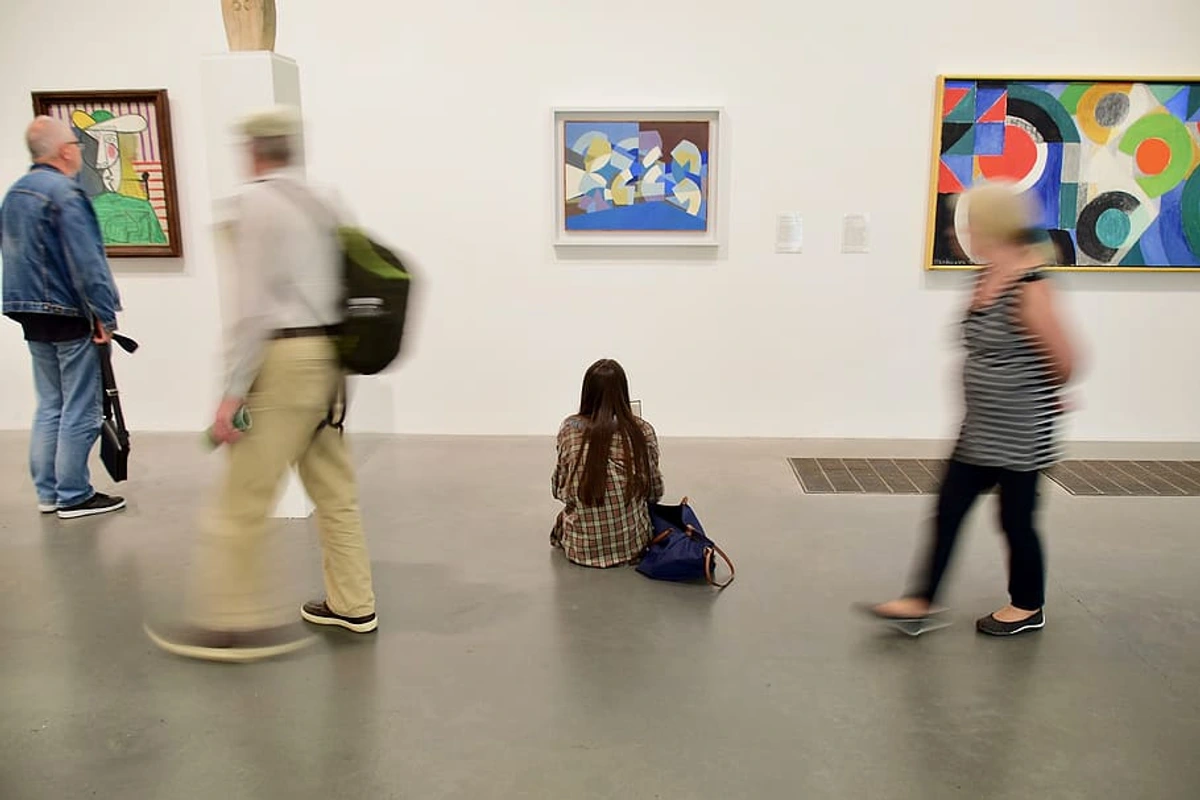
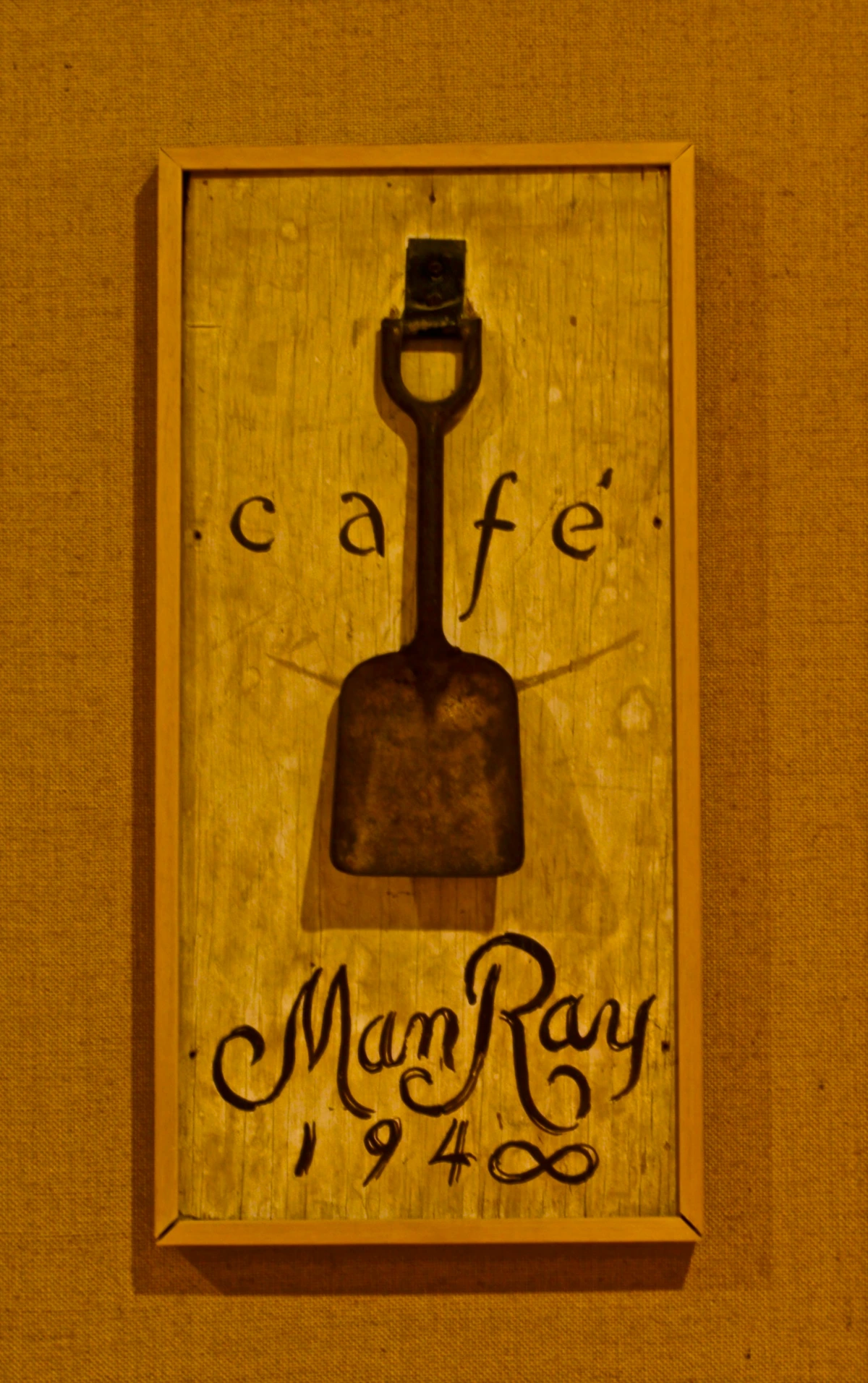
Dynamic Engagement: Special Exhibitions, Tours, and Educational Programs
Beyond the permanent collections and stunning architecture, the Getty Center offers a rich tapestry of dynamic engagement opportunities designed to deepen one's appreciation and understanding of the arts. These programs are thoughtfully curated to provide fresh perspectives and cater to a wide range of interests, from the casual visitor to the serious scholar.
Special Exhibitions and Tours
Before one's visit, the curator highly recommends always checking the Getty Center's website for current special exhibitions and available tours. The museum frequently hosts temporary exhibitions that delve deeper into specific artists, periods, or themes, providing fresh and engaging perspectives even for repeat visitors. These temporary shows, often changing every few months, are incredible and well worth planning one's visit around, as they offer unique opportunities to see works not typically on display, sometimes even bringing in pieces from international collections. Often, these exhibitions explore contemporary themes or artists, creating a dialogue between historical and modern art.
And indeed, please consider a tour! The complimentary docent-led tours, often focusing on architecture, the Central Garden, or specific collection highlights, offer invaluable insights that one simply wouldn't get wandering on their own. The curator has joined several over the years, and each time new knowledge is gained, or a familiar artwork is seen in a completely different light. These tours truly bring the place to life, offering a deeper understanding of the Getty's many layers and the stories behind the art, often with an opportunity for Q&A with the knowledgeable docents. Audio guides are also typically available, providing self-paced commentary on the collections and significant sites around the campus, allowing for a personalized and enriching experience, sometimes even in multiple languages. For those with a specific interest, specialized thematic tours might also be available on select days, such as architectural tours focusing on Meier's design or garden tours delving into Irwin's vision, so always check the schedule. The curator believes these focused tours offer an invaluable opportunity to engage with specific aspects of the Getty on a deeper, more expert-led level.

Making the Most of Your Day
Digital Resources: The GettyGuide App and Beyond
In this digital age, the Getty Center embraces technology to enhance the visitor experience. The official GettyGuide app is a true gem, offering interactive maps, self-guided audio tours on various themes (architecture, gardens, collection highlights), and up-to-date information on current exhibitions and events. The curator always recommends downloading it before one's visit; it transforms a good visit into a truly personalized and insightful journey. Beyond the app, the Getty website also hosts a wealth of online resources, including scholarly articles, high-resolution images of artworks, virtual exhibitions, and educational videos, allowing one to extend their learning long after their visit. The complimentary Wi-Fi available throughout much of the campus ensures seamless access to these digital companions, making it easy to share your discoveries in real-time. The curator finds that these digital tools truly extend the experience, allowing for both deeper engagement on-site and continued learning long after the visit concludes. They serve as an invaluable companion, transforming a passive visit into an interactive and deeply personal exploration of the Getty's vast treasures.
To ensure a fulfilling visit, consider these additional tips and amenities available at the Getty Center.

Digital resources like the GettyGuide app truly empower visitors to tailor their experience, ensuring that every moment is as enriching as possible, and can even serve as a delightful preview or a thoughtful follow-up to a physical visit.
Dining Options
It is often found that a good meal can truly enhance a day of museum-going, and the Getty Center certainly delivers. They offer several dining options, catering to different moods and appetites. From casual cafes perfect for a quick snack or coffee to a more formal restaurant with truly stunning views, there are ample choices. The Main Cafeteria is often favored for its variety and convenience, offering a range of options from fresh salads and hot entrees to delicious desserts, often with locally sourced ingredients and vegetarian options. For a more upscale experience or a special occasion, The Restaurant with its panoramic vistas is an unbeatable choice for a leisurely meal (reservations are highly recommended, especially for weekend lunch). Additionally, the Courtyard Cafe offers lighter fare and a relaxed outdoor setting, perfect for a coffee and pastry, or perhaps a glass of wine. And for those who prefer to keep things simple, packing a picnic to enjoy in one of the designated garden areas is a popular (and very Los Angeles) choice, allowing one to truly soak in the ambiance and views. The curator often finds the Courtyard Cafe to be a hidden gem for a peaceful coffee break amidst the artistic exploration, especially when one needs a moment of quiet reflection before diving back into the galleries or gardens. For those seeking something truly unique, the views from The Restaurant are unparalleled, making it a perfect spot to celebrate a special occasion, host a business lunch, or simply indulge in a memorable meal with one of the most spectacular backdrops in Los Angeles, promising an experience that lingers long after the last bite.
Dining Option | Description | Vibe |
|---|---|---|
| The Restaurant | Upscale fine dining with a seasonal, California-inspired menu, extensive wine list, indoor and outdoor seating with panoramic views. | Elegant, sophisticated, ideal for a special occasion, romantic lunch, or an indulgent culinary experience with breathtaking scenery. |
| Main Cafeteria | Diverse hot and cold options, including fresh salads, hearty entrees, sandwiches, and delicious desserts, often with locally sourced ingredients. | Casual, bustling, family-friendly, convenient for a quick and varied lunch with ample seating and a lively atmosphere. |
| Courtyard Cafe | Lighter fare, gourmet coffee, espresso drinks, fresh pastries, and snacks, located near the Central Garden's serene beauty. | Relaxed, scenic, perfect for a peaceful coffee break, light snack, or a glass of wine amidst the gardens. |
| Coffee Carts | Strategically located carts offering grab-and-go coffee, espresso, and light snacks for a quick energy boost. | Quick, convenient, on-the-go, ideal for a caffeine pick-me-up while continuing exploration. |
| Picnic Areas | Designated outdoor areas with tables and benches available throughout the gardens and terraces. | Bring your own food, relaxed, budget-friendly, and perfect for soaking in the ambiance and views at your own pace. |
Gift Shop
Before one finally descends the tram, the extensive gift shop is always worth exploring. It's not just any museum shop; it features a wonderfully curated selection of art books (many intellectual treasures can be found here!), high-quality reproductions of masterpieces, unique gifts inspired by the collections, and items specifically related to the Getty's current exhibitions. One can find everything from exquisite art prints and jewelry to educational toys for children and unique home decor. It's a fantastic place to find a souvenir that genuinely commemorates a visit or a thoughtful art-related gift for a fellow enthusiast. The offerings often reflect the Getty's dedication to both classical and modern aesthetics, providing a tangible memory of the artistic journey. And speaking of unique art, if the beauty of the Getty has inspired one to consider owning a piece of modern art for one's own home, one can always buy directly from the Zen Museum collection, carrying a bit of that profound inspiration with them. The curator always enjoys browsing the extensive selection of art history books, often discovering rare finds not available elsewhere, from scholarly texts to beautifully illustrated exhibition catalogs. It's a treasure trove for anyone looking to deepen their understanding or simply bring a piece of the Getty's intellectual spirit home. One can also find high-quality reproductions of masterpieces, unique jewelry, educational toys for children, and distinctive home decor, all thoughtfully curated to reflect the Getty's collections and architectural aesthetic. And speaking of unique art, if the beauty of the Getty has inspired one to consider owning a piece of modern art for one's own home, one can always buy directly from the Zen Museum collection, carrying a bit of that profound inspiration with them, a tangible memory of the artistic journey.

Observation Decks and Views
It is genuinely believed that one cannot overstate the importance of the views from the Getty Center – they are an integral part of the experience. From multiple vantage points across the campus, visitors can take in the sprawling urban landscape of Los Angeles, stretching out to the glistening Pacific Ocean on one side and backed by the majestic San Gabriel Mountains on the other. On a truly clear day, views extend as far as Catalina Island and even across to the Hollywood sign! These vistas are particularly spectacular at sunrise (though accessing the Center that early is often a challenge) or, more practically, at sunset, offering a dramatic, ever-changing backdrop to a cultural excursion. The way the city lights begin to twinkle as the sun dips below the horizon is, for many, a truly magical and unforgettable experience. The South Promontory offers perhaps the most expansive ocean views, stretching to Catalina Island on a clear day, a truly invigorating vista. The East Pavilion, conversely, provides a stunning perspective on downtown Los Angeles and its iconic skyline, a vibrant urban panorama. For photographers, capturing the city at dusk from the West Pavilion offers a spectacular array of twinkling lights as the sun dips below the horizon, creating a truly magical scene. It always brings to mind the incredible vistas from the den-bosch-museum, truly inspiring in their own way, but in a completely different, European context, reminding the curator of the universal appeal of breathtaking landscapes. The North Pavilion also offers unique perspectives of the rolling hills and the distant mountains, providing a serene contrast to the urban sprawl. The curator finds these various vantage points to be more than just pretty views; they offer a profound sense of place, connecting the Getty to its Los Angeles context and the vast natural landscape beyond, a recurring theme that resonates deeply with the Zen Museum's own curated experiences, inviting contemplation on the interplay of art, nature, and urbanity.
The vistas from the Getty Center are, in the curator's opinion, an artwork in themselves, constantly changing with the light and time of day, offering endless opportunities for stunning photography. Do not forget to look up, look out, and capture these moments.
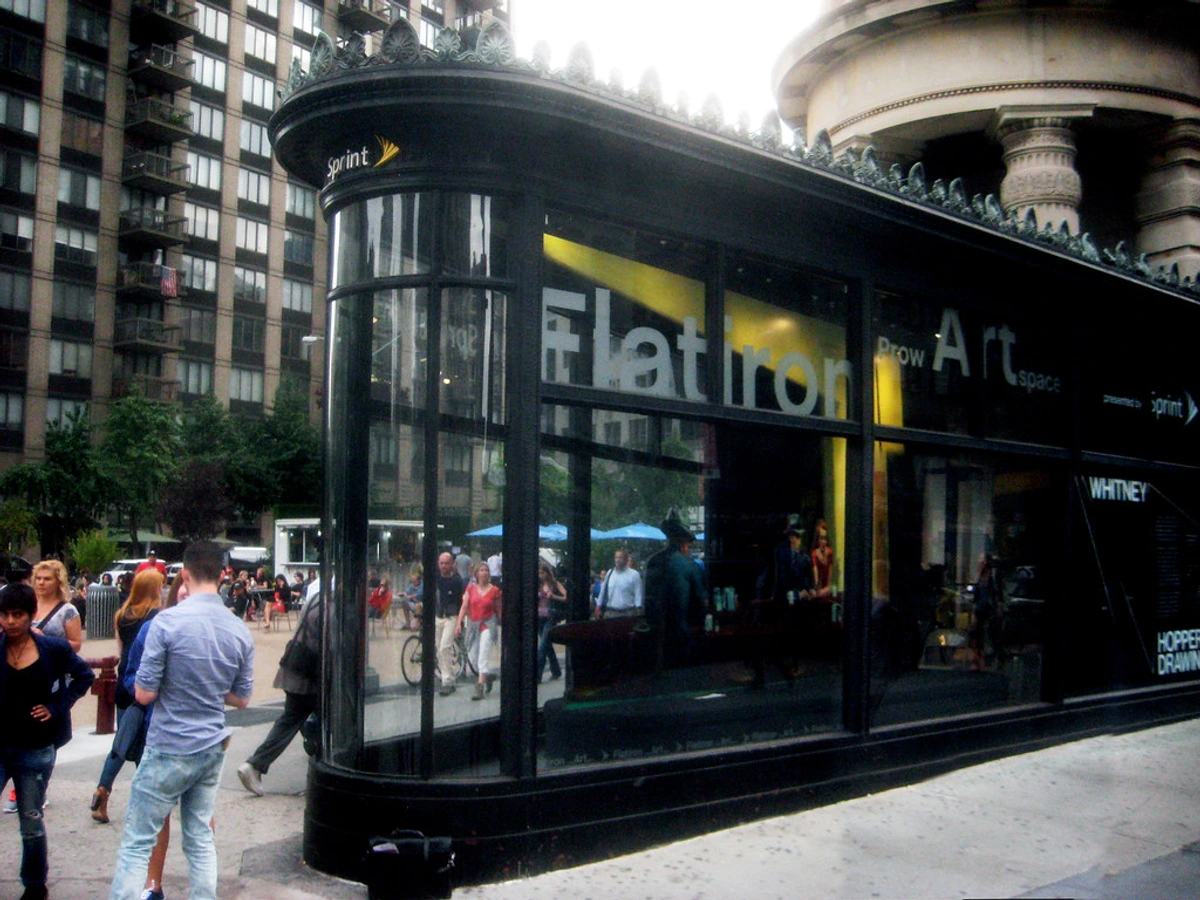
Special Exhibitions and Tours
Before one's visit, the curator highly recommends always checking the Getty Center's website for current special exhibitions and available tours. The museum frequently hosts temporary exhibitions that delve deeper into specific artists, periods, or themes, providing fresh and engaging perspectives even for repeat visitors. These temporary shows, often changing every few months, are incredible and well worth planning one's visit around, as they offer unique opportunities to see works not typically on display, sometimes even bringing in pieces from international collections. Often, these exhibitions explore contemporary themes or artists, creating a dialogue between historical and modern art.
And indeed, please consider a tour! The complimentary docent-led tours, often focusing on architecture, the Central Garden, or specific collection highlights, offer invaluable insights that one simply wouldn't get wandering on their own. The curator has joined several over the years, and each time new knowledge is gained, or a familiar artwork is seen in a completely different light. These tours truly bring the place to life, offering a deeper understanding of the Getty's many layers and the stories behind the art, often with an opportunity for Q&A with the knowledgeable docents. Audio guides are also typically available, providing self-paced commentary on the collections and significant sites around the campus, allowing for a personalized and enriching experience, sometimes even in multiple languages. For those with a specific interest, specialized thematic tours might also be available on select days, such as architectural tours focusing on Meier's design or garden tours delving into Irwin's vision, so always check the schedule. The curator believes these focused tours offer an invaluable opportunity to engage with specific aspects of the Getty on a deeper, more expert-led level.
Capturing the Moment: Photography at the Getty
As an artist, the curator is always conscious of how we capture and interact with beauty. The Getty Center, thankfully, is incredibly photography-friendly, encouraging visitors to document their experience! Non-flash photography for personal use is generally permitted in the permanent collection galleries and all outdoor spaces. This means visitors can freely capture Richard Meier's stunning architecture, Robert Irwin's evolving gardens, and those breathtaking panoramic views without worry. However, to ensure visitor flow, safety, and the protection of artworks, tripods, monopods, and professional lighting equipment are typically not allowed inside the galleries. Flash photography is strictly prohibited in all galleries, as it can damage delicate artworks. One must always remember to be respectful of other visitors and any specific signage for special exhibitions, as rules might vary significantly due to copyright or lender agreements. For the best outdoor shots, the curator suggests a wide-angle lens for architecture and landscapes, and a telephoto for capturing distant city details, especially during the 'golden hour' around sunset. It is a wonderful way to bring a piece of the experience home and revisit those moments of inspiration, fostering a deeper connection with the art and environment. For those looking to elevate their photography, the Getty's diverse lighting conditions offer endless creative opportunities, from harsh midday sun to soft twilight glows. The curator particularly recommends experimenting with reflections in the numerous water features and glass surfaces, which can create stunning, abstract compositions. Always remember that the best photo is often a matter of patience and finding a unique perspective.
Educational Programs and Resources: A Hub for Lifelong Learning
Beyond its captivating exhibitions, the Getty Center is a vibrant hub for learning and engagement, catering to a wide array of interests and age groups. It offers a rich variety of educational programs, from interactive family workshops and hands-on art classes designed to spark creativity in younger visitors, to scholarly lectures, film screenings, and symposia that delve into complex art historical topics. For students and researchers, the esteemed Getty Research Institute (GRI) provides unparalleled access to extensive archives, rare manuscripts, and a world-class art history library, cementing the Getty's role as a global leader in art historical scholarship and critical inquiry. The GRI also offers fellowships and hosts public lecture series, bringing cutting-edge research to a wider audience. Even for the casual visitor, the thoughtfully designed interpretive materials within the galleries and the insightful docent-led tours serve as excellent educational resources, fostering a deeper appreciation and understanding for the arts and their profound impact on human culture. The Getty also provides a wealth of online learning resources, including virtual exhibitions and digital publications, making its knowledge accessible globally. The curator finds these programs to be a testament to the Getty's holistic approach to art and education, ensuring that the institution is a living, breathing resource for all. For students and researchers, the esteemed Getty Research Institute (GRI) provides unparalleled access to extensive archives, rare manuscripts, and a world-class art history library, cementing the Getty's role as a global leader in art historical scholarship and critical inquiry. The GRI also offers fellowships and hosts public lecture series, bringing cutting-edge research to a wider audience. Even for the casual visitor, the thoughtfully designed interpretive materials within the galleries and the insightful docent-led tours serve as excellent educational resources, fostering a deeper appreciation and understanding for the arts and their profound impact on human culture. The Getty also provides a wealth of online learning resources, including virtual exhibitions and digital publications, making its knowledge accessible globally. For serious scholars, the Getty Research Institute’s digital collections and research portals are an unparalleled treasure trove, offering access to rare manuscripts, historical photographs, and art historical documents that fuel groundbreaking academic work worldwide, truly serving as a hub for lifelong learning.
Capturing the Moment: Photography at the Getty
As an artist, the curator is always conscious of how we capture and interact with beauty. The Getty Center, thankfully, is incredibly photography-friendly, encouraging visitors to document their experience! Non-flash photography for personal use is generally permitted in the permanent collection galleries and all outdoor spaces. This means visitors can freely capture Richard Meier's stunning architecture, Robert Irwin's evolving gardens, and those breathtaking panoramic views without worry. However, to ensure visitor flow, safety, and the protection of artworks, tripods, monopods, and professional lighting equipment are typically not allowed inside the galleries. Flash photography is strictly prohibited in all galleries, as it can damage delicate artworks. One must always remember to be respectful of other visitors and any specific signage for special exhibitions, as rules might vary significantly due to copyright or lender agreements. For the best outdoor shots, the curator suggests a wide-angle lens for architecture and landscapes, and a telephoto for capturing distant city details, especially during the 'golden hour' around sunset. It is a wonderful way to bring a piece of the experience home and revisit those moments of inspiration, fostering a deeper connection with the art and environment. For those looking to elevate their photography, the Getty's diverse lighting conditions offer endless creative opportunities, from harsh midday sun to soft twilight glows. The curator particularly recommends experimenting with reflections in the numerous water features and glass surfaces, which can create stunning, abstract compositions. Always remember that the best photo is often a matter of patience and finding a unique perspective.
The Getty Center is a true intellectual playground, designed to foster curiosity and provide pathways to deeper engagement with the visual arts for all who seek it.
The Curator's Getty Game Plan: Pro-Tips for First-Timers
Based on the curator's extensive experiences and a fair few visits, here are the top, no-nonsense tips to ensure a first trip to the Getty is nothing short of fantastic:
To help navigate this magnificent institution and ensure a visit filled with discovery and delight, the curator offers a set of tried-and-true recommendations, gleaned from countless personal explorations.
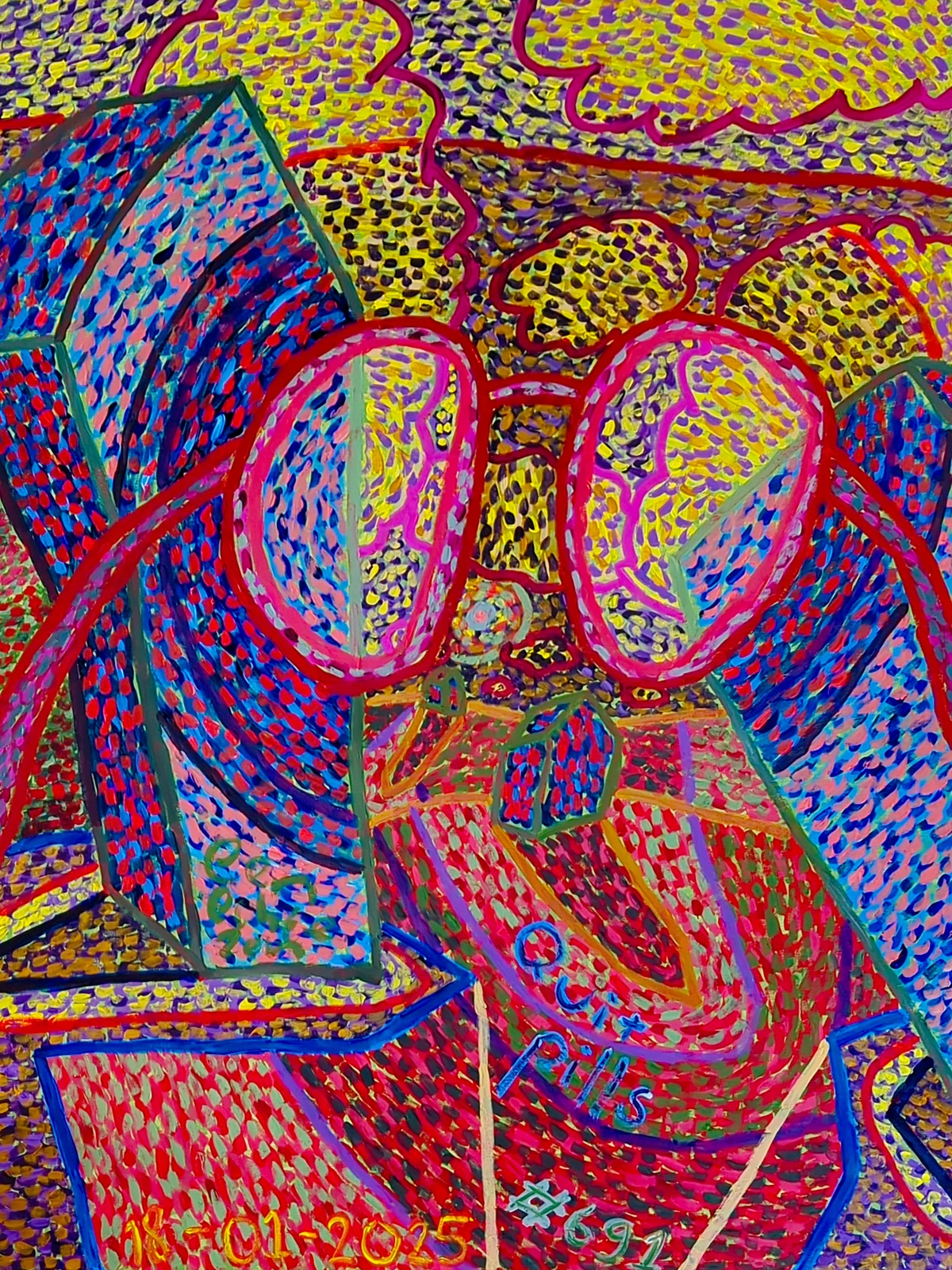
- Lace Up Your Comfiest Kicks: Seriously, one will thank themselves later. The curator cannot emphasize this enough. The campus is vast, hilly, and designed for extensive exploration on foot, with numerous pathways, stairs, and terraces. Save the stylish but uncomfortable shoes for another day; your feet (and your mood!) will profoundly appreciate sensible footwear.
- Time Your Arrival Like a Pro: If one, like the curator, prefers a bit more tranquility, aim to arrive shortly after opening on a weekday. The early bird definitely gets the serene views and a more intimate experience with the art and architecture. Alternatively, a late afternoon visit is perfect for catching that iconic Los Angeles sunset, though one will be sharing it with more folks, so plan for slightly larger crowds. And speaking of time, don't try to see everything in one go; the Getty rewards multiple, focused visits, allowing for deeper engagement with specific collections or gardens.
- Embrace the Tram Experience: It's not just transport; it's an integral part of the Getty's charm, a curated transition from the city to the artistic realm. The ascent offers one's first glimpses of the magnificent architecture and panoramic views, building anticipation for the cultural treasures ahead. Consider it part of the adventure, a vital step in the unfolding Getty narrative, not just a mere shuttle ride.
- The Website is Your Best Friend: Always, always confirm hours, check for any special exhibitions one might want to see, and understand reservation requirements before heading out. A quick check can save disappointment.
- Give the Gardens Their Due: Especially Robert Irwin's Central Garden. Do not rush it. It's designed for leisurely exploration and contemplation, a living sculpture that constantly transforms. The curator often finds new details with each visit, so take one's time and let it unfold, engaging all the senses. And if crowds are bothering you, seek out the quieter courtyards or even the individual gallery alcoves; moments of solitude with the art are precious, offering a serene escape.
- Stay Hydrated, My Friend: Southern California sun can be intense. Bring a reusable water bottle; there are plenty of places to refill it throughout the day. One's energy levels (and skin!) will thank them.
- Embrace the Apps: Download the GettyGuide app before your visit for interactive maps, self-guided audio tours on various themes (architecture, gardens, collection highlights), and up-to-date information on current exhibitions and events. It's a fantastic digital companion, particularly useful for families as it often includes child-friendly narratives or scavenger hunts, truly enhancing the on-site learning and discovery.
- Don't Skip the Gift Shop: Seriously, it's more than just souvenirs. The book selection, in particular, is top-notch and a great way to deepen your art knowledge long after your visit.
- Consider a Sister Site Visit: The Getty Villa: While a separate location (in Malibu) and requiring its own timed-entry reservation, the Getty Villa is part of the J. Paul Getty Trust and focuses exclusively on ancient Greek, Roman, and Etruscan art displayed within a recreated Roman country house and stunning gardens. Consider visiting it on a separate day if one's itinerary allows; it offers a distinctly different, yet equally enriching, experience, transporting visitors to the classical world.
Frequently Asked Questions (FAQ)
Is the Getty Center free to enter?
Yes, general admission to The Getty Center is free. There is typically a flat fee for parking, however.
How long does it take to visit the Getty Center?
Most visitors spend anywhere from 3 to 5 hours exploring the museum, gardens, and architecture. If you plan to see everything, enjoy a leisurely meal, attend a tour, or immerse yourself in a special exhibition, a full day (6-8 hours) might be necessary to avoid feeling rushed. The curator, having explored the Getty countless times, recommends allocating at least half a day to a full day to truly appreciate its extensive offerings without feeling hurried, allowing ample time for contemplation and discovery.
Can you bring food and drinks to the Getty Center?
Outside food and non-alcoholic beverages are generally permitted in the outdoor picnic areas. The Getty Center also has several dining options on-site.
Is photography allowed at the Getty Center?
Yes, non-flash photography for personal use is generally permitted in the permanent collection galleries and outdoor spaces. Special exhibition rules may vary, so always check signage.
Are there specific programs for children and families?
Absolutely! The Getty Center is renowned for its exceptional family-friendly approach, offering a diverse array of programs designed to engage younger visitors and cultivate a lifelong appreciation for art. This includes hands-on art-making workshops, interactive family festivals with live performances and creative activities, and youth-focused audio tours that make learning about art fun and accessible. The Central Garden's azalea maze is also a particular hit with children, offering a delightful space for exploration and imaginative play. The curator often finds immense joy in seeing families discover the Getty together, fostering a love for art from an early age through engaging and memorable experiences.
Is the Getty Center accessible for visitors with disabilities?
Yes, absolutely. The Getty Center is thoughtfully designed to be fully accessible, with ramps, elevators, and accessible restrooms throughout all public areas. Manual wheelchairs are also readily available for complimentary loan on a first-come, first-served basis at the Lower Tram Station and the Museum Information Desk, ensuring ease of movement across the expansive campus. Additional services like courtesy golf cart transportation can be arranged for those needing assistance navigating the outdoor paths between buildings and gardens. Large print guides, assistive listening devices, and sign language interpreters (with advance notice) are also available upon request, underscoring the Getty's profound dedication to inclusivity and a truly welcoming experience for all. The curator finds this comprehensive commitment to accessibility to be exemplary, making it a model for cultural institutions worldwide.
What are the key highlights of the Getty Center's art collection?
The collection is known for its European paintings (including works by Van Gogh, Monet, and Rembrandt), decorative arts, illuminated manuscripts, and photography. The architecture and gardens are also major attractions.
Are there guided tours available?
Yes, the Getty Center offers free docent-led tours focusing on architecture, the gardens, or specific collection highlights. Audio guides are also typically available.
Is there Wi-Fi at the Getty Center?
Yes, complimentary Wi-Fi is available throughout much of the Getty Center campus, making it easy to use digital guides or share your experience.
Is there a suggested itinerary for first-time visitors?
For first-time visitors, the curator suggests a general flow: begin with the architecture and panoramic views upon arrival, then explore a few key painting galleries (perhaps the Impressionists and Dutch Masters), dedicate ample time to Robert Irwin's Central Garden, and finally, enjoy a meal or coffee with a view. Prioritize what interests you most, and remember, it's perfectly fine to leave some areas for a return visit, as the Getty truly rewards repeated exploration.
What is the difference between the Getty Center and the Getty Villa?
The Getty Center in Los Angeles houses European art from the Middle Ages to the early 20th century, along with architecture and gardens. The Getty Villa, located in Malibu, is dedicated to ancient Greek, Roman, and Etruscan art within a recreated Roman country house and gardens. They are separate sites and require separate reservations.
Are pets allowed at the Getty Center?
Only service animals are permitted at the Getty Center. Pets are not allowed, with the exception of service animals.
Are there specific photography rules for special exhibitions?
Yes, while general photography is usually permitted in permanent collection galleries, special exhibitions often have unique rules regarding photography due to copyright restrictions or lender agreements. The curator always advises checking the signage prominently displayed at the entrance to any temporary exhibit – it is usually very clear and should be adhered to respectfully.
Are there restrictions on what I can bring into the galleries?
To ensure the safety of the artworks and other visitors, large bags, backpacks (over 11 x 17 x 8 inches), and certain items like sharp objects or outside alcohol are generally not permitted inside the galleries. Lockers are available for storage, and it is always best to check the official website's visitor guidelines before your visit. The curator always advises utilizing the lockers to enjoy a hands-free exploration of the galleries.
Is the Getty Center suitable for children?
Absolutely! The Getty Center welcomes families and often has specific programs or activity guides for children, such as interactive family festivals, art-making workshops, and youth-friendly audio tours. The vast outdoor spaces, gardens (especially the Central Garden with its maze), and even the architecture itself can be incredibly engaging for younger visitors, offering ample space to explore and discover. The curator has seen many families having a wonderful time exploring together, making it a fantastic destination for all ages.
Are there lockers or coat checks available?
Yes, one will find lockers available for visitors to store bags, coats, and other personal items. The curator always recommends utilizing them if carrying anything heavy, as it frees one up to enjoy the art and gardens without being weighed down. Check with the information desk upon arrival for locations and operating procedures.
What if I lose something at the Getty Center?
The Getty Center has a Lost and Found department. If one realizes they have lost an item during their visit, it is advisable to contact the Museum Information Desk or call their general inquiries line. Providing a detailed description of the item and the approximate time and location it was lost will assist the staff in their efforts to reunite visitors with their belongings.
Can I bring a tripod for photography?
While non-flash photography is generally permitted, tripods, monopods, and professional lighting equipment are typically not allowed inside the galleries or certain crowded outdoor spaces to ensure visitor flow and safety. Handheld cameras are usually fine, but always be mindful of others and check for specific signage, especially in special exhibitions. For those with a serious photographic interest, the curator suggests focusing on the architecture and gardens, where more creative setups might be possible in less crowded areas, always with respect for the rules and other visitors.
Are there specific photography rules for special exhibitions?
Yes, while general photography is usually permitted in permanent collection galleries, special exhibitions often have unique rules regarding photography due to copyright restrictions or lender agreements. The curator always advises checking the signage prominently displayed at the entrance to any temporary exhibit – it is usually very clear and should be adhered to respectfully.
Can I sketch or draw in the galleries?
Yes, non-flash sketching and drawing with pencil are generally permitted in the galleries. The curator finds it a fantastic way to engage more deeply with the artworks, fostering a more intimate connection with the pieces. However, one must always be mindful of other visitors and ensure only dry media (pencil, charcoal, pastels) are used. Easels, stools, or large sketchbooks that might impede pathways are typically not allowed in crowded areas. The curator encourages this practice as a personal way to interact with and respond to the art, provided it's done respectfully and doesn't obstruct others.
Conclusion: The Curator's Final Thoughts on the Getty Experience
The Getty Center is, to the curator, so much more than just a museum; it's a testament to the enduring power of art, architecture, and nature to inspire and uplift the human spirit. From the moment one ascends the tram, leaving the bustling city behind, one is transported to a place of aesthetic beauty and profound intellectual curiosity, a true modern acropolis dedicated to the visual arts. It's a place that challenges, soothes, and delights, offering something new with every visit, every season, and every thoughtful moment of contemplation. It truly serves as a beacon of cultural enrichment, inviting all to engage with the timeless pursuit of beauty and knowledge. The curator finds that the Getty embodies the very best of what a cultural institution can offer: a place for discovery, reflection, and connection.
![]()
Whether one finds themselves utterly captivated by a master painting from a bygone era, happily lost in the intricate patterns of the Central Garden, or simply marveling at the panoramic views that stretch to the horizon, a visit to The Getty Center is an undeniably enriching experience. It truly captures a unique spirit of Los Angeles—one of aspiration, beauty, and thoughtful design. The curator finds that this spirit extends beyond the physical structures and artworks, permeating the very ethos of the institution as a place of learning, reflection, and quiet inspiration. The curator always leaves feeling a little more inspired, a little more reflective, and profoundly grateful for such spaces. It’s a place where, the curator has found, every visit reveals something new, much like delving into the intricate timeline of an artist's career, full of unexpected discoveries and profound moments. The very essence of the Central Garden, for instance, with its abstract forms and evolving nature, often reminds the curator of the deeper principles explored in abstract art movements – a fascinating thought, would one not agree? Such experiences profoundly influence one's artistic perspective, much like the vibrant and contemplative pieces found in the Zen Museum collection. Whether one is drawn to the bold lines of Meier's architecture or the subtle hues of a Van Gogh, the Getty offers an endless wellspring of inspiration, echoing the diverse narratives and visual journeys celebrated in contemporary art and encouraging a lifelong appreciation for artistic expression. So, pack your bags, lace up your walking shoes, and prepare for a truly unforgettable journey into the heart of Los Angeles's cultural landscape. The Getty awaits! The curator assures you that you might just leave, like he often does, with a renewed sense of wonder, a fresh perspective on the profound connections between art, nature, and the human experience, and a desire to return to this modern marvel.
